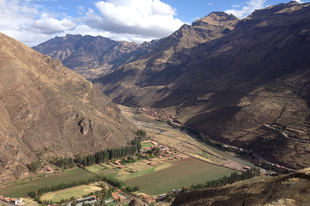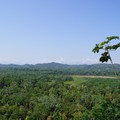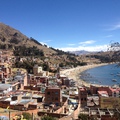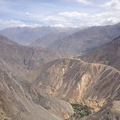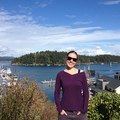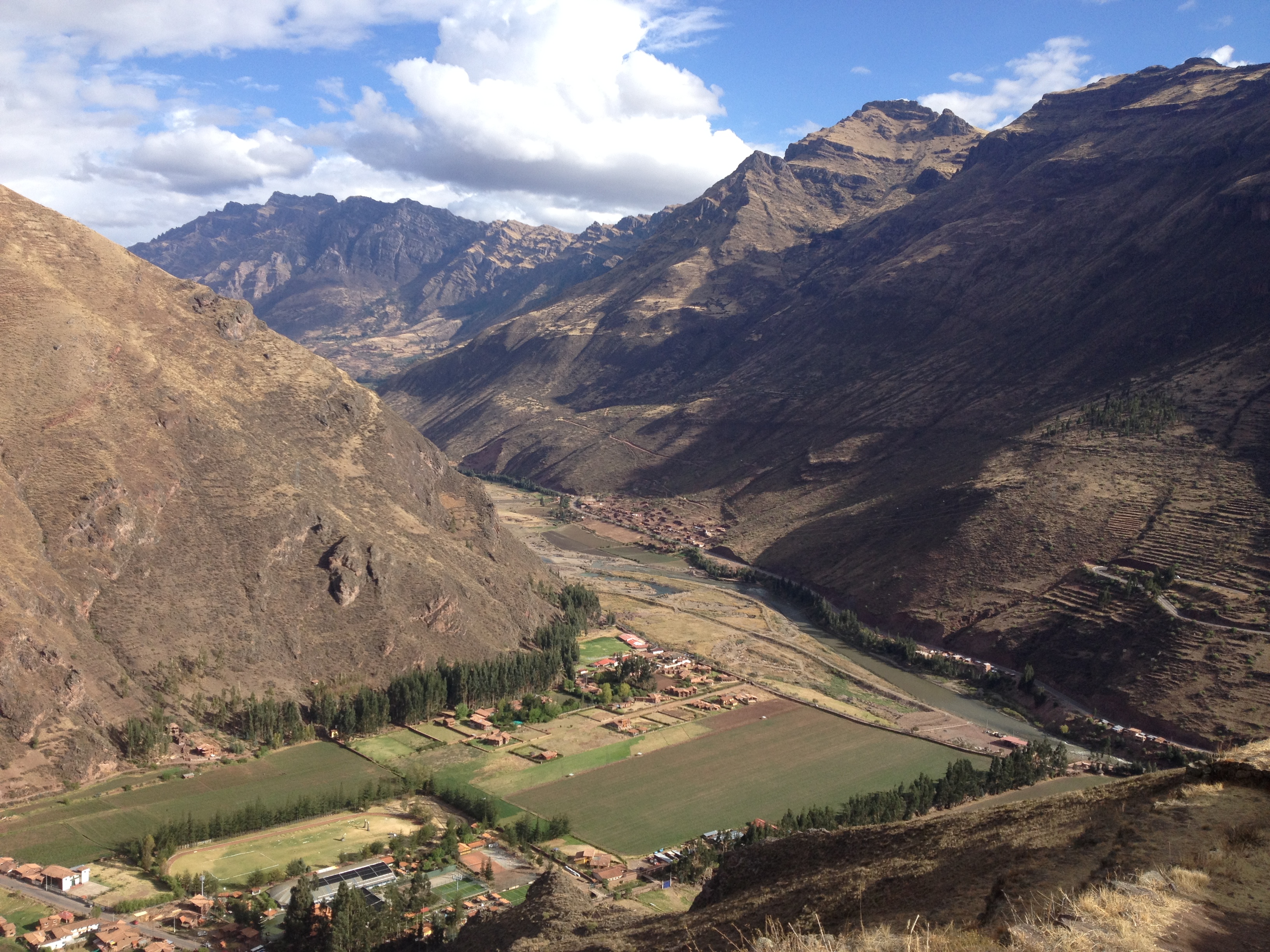 The beautiful Río Urubamba Valley contains the best land in the region, therefore it was already appreciated and inhabited by the Incas. They have called the area between Pisac and Ollantaytambo the Sacred Valley and created several settlements of great importance there.
The beautiful Río Urubamba Valley contains the best land in the region, therefore it was already appreciated and inhabited by the Incas. They have called the area between Pisac and Ollantaytambo the Sacred Valley and created several settlements of great importance there.
The Sacred Valley has numerous archaeological monuments, attractive colonial towns and isolated weaving villages. Given our limited time, we decided to see only the highlights; the markets and the lofty citadels of Pisac and Ollantaytambo.
Pisac
Pisac is only 50 minutes away from Cusco by public transport (colectivos). For those of you who haven't heard of colectivos before, it is a cheap mean of transportation in Latin America; basically a minivan which drives on a fixed route and only leaves when it is filled with passengers. It is a brilliant system, we have used it in Mexico, Dominican Republic and now Peru.
Pisac is a small village with a lively market on Sundays and Thursdays. We walked by the market and gazed at the exotic fresh produce on display and wondered how they might taste. We did not buy anything though, because we decided to save this culinary experience for another time.
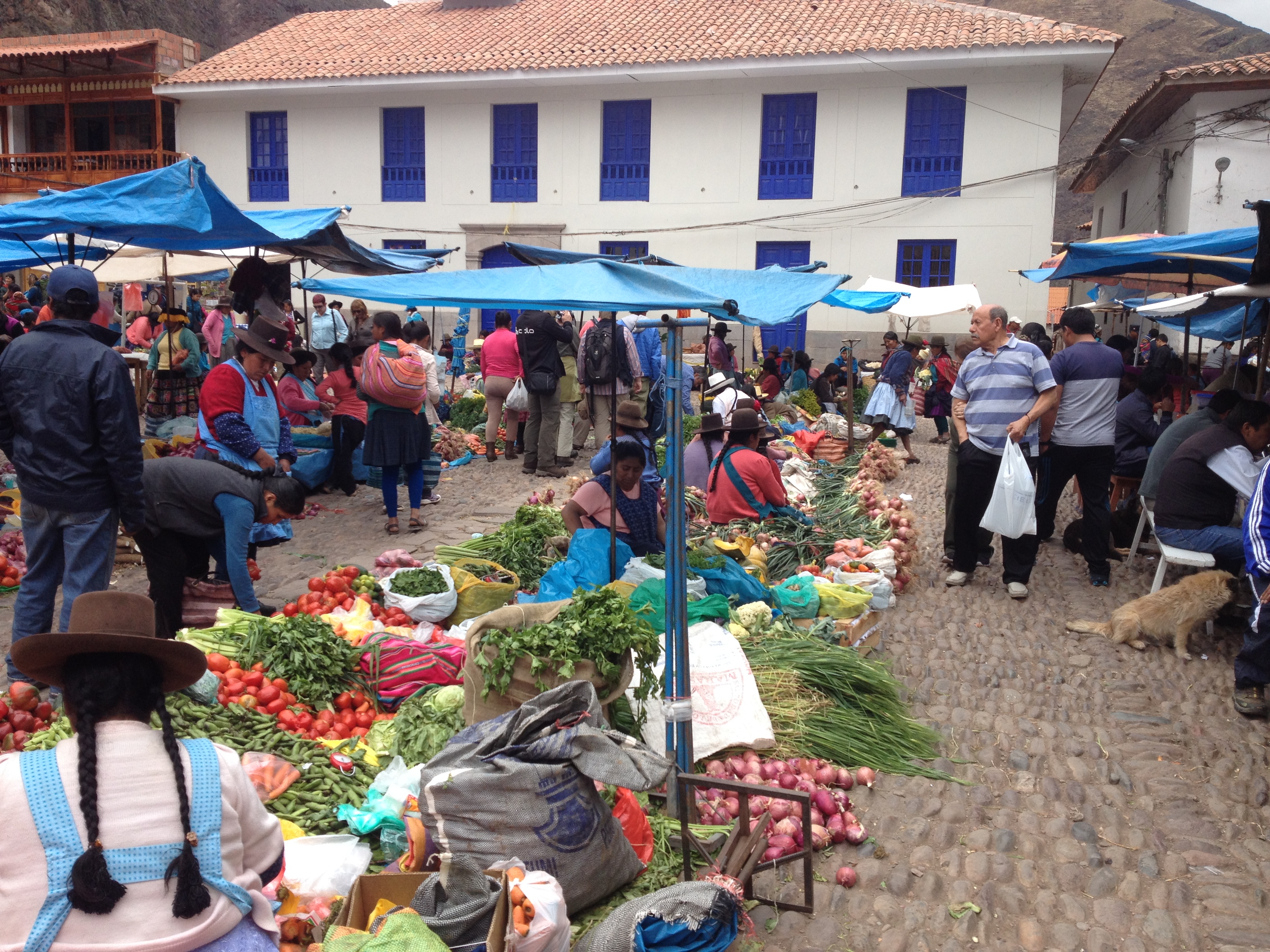 After the market we headed to the Inca ruins which turned out to be much bigger as expected. First we climbed up the agricultural terraces the Incas constructed on the steep hillside.
After the market we headed to the Inca ruins which turned out to be much bigger as expected. First we climbed up the agricultural terraces the Incas constructed on the steep hillside.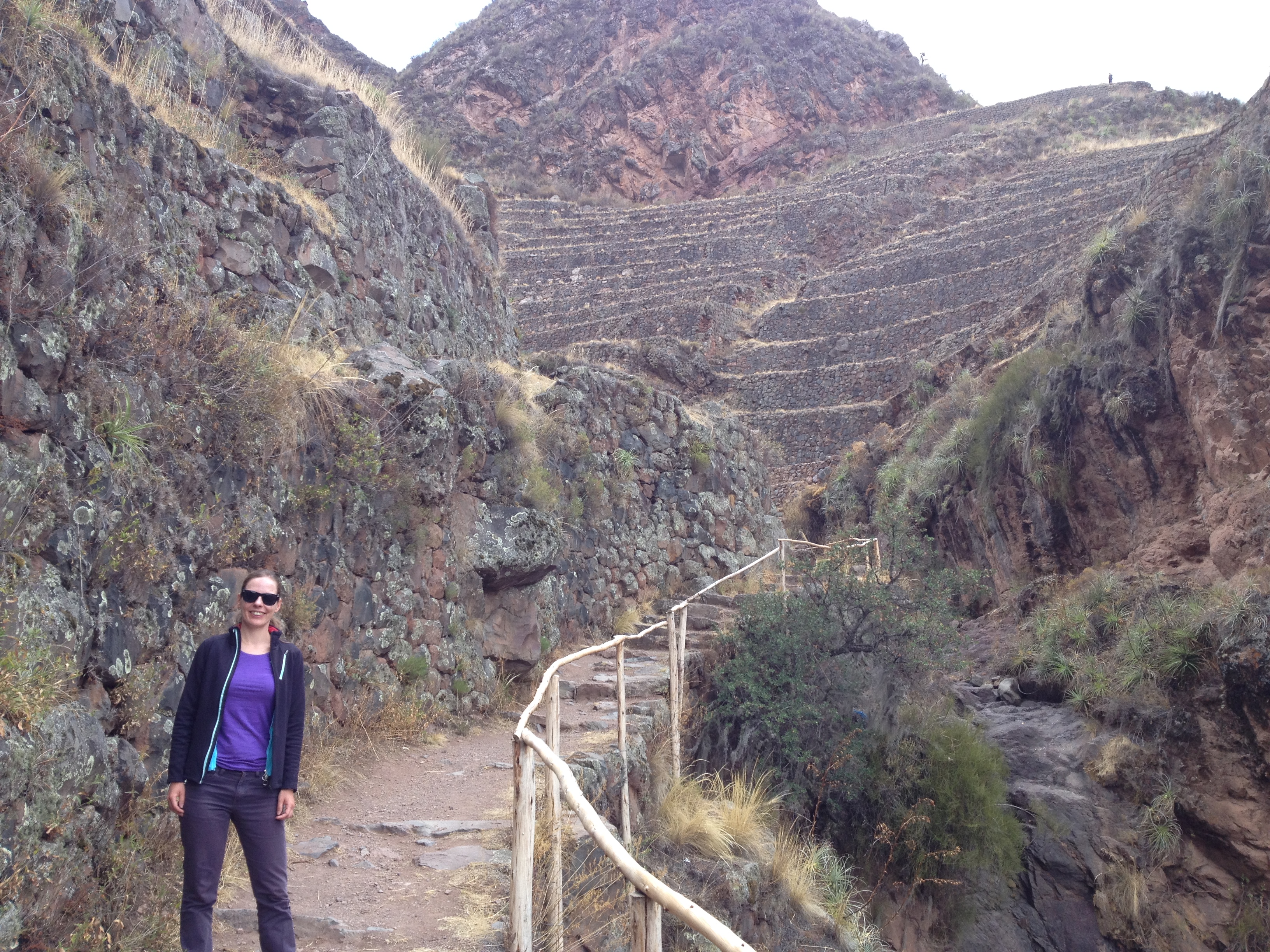
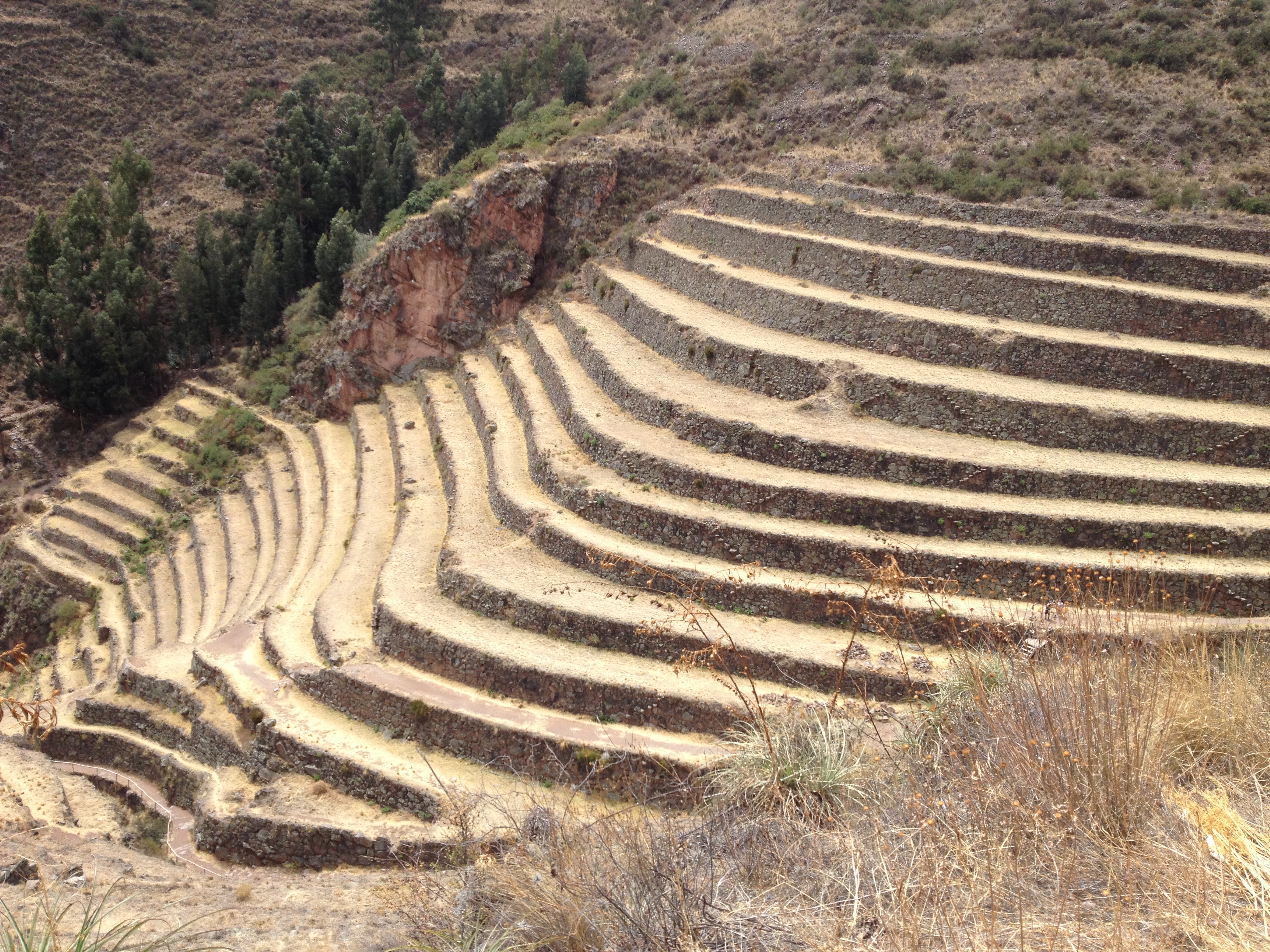
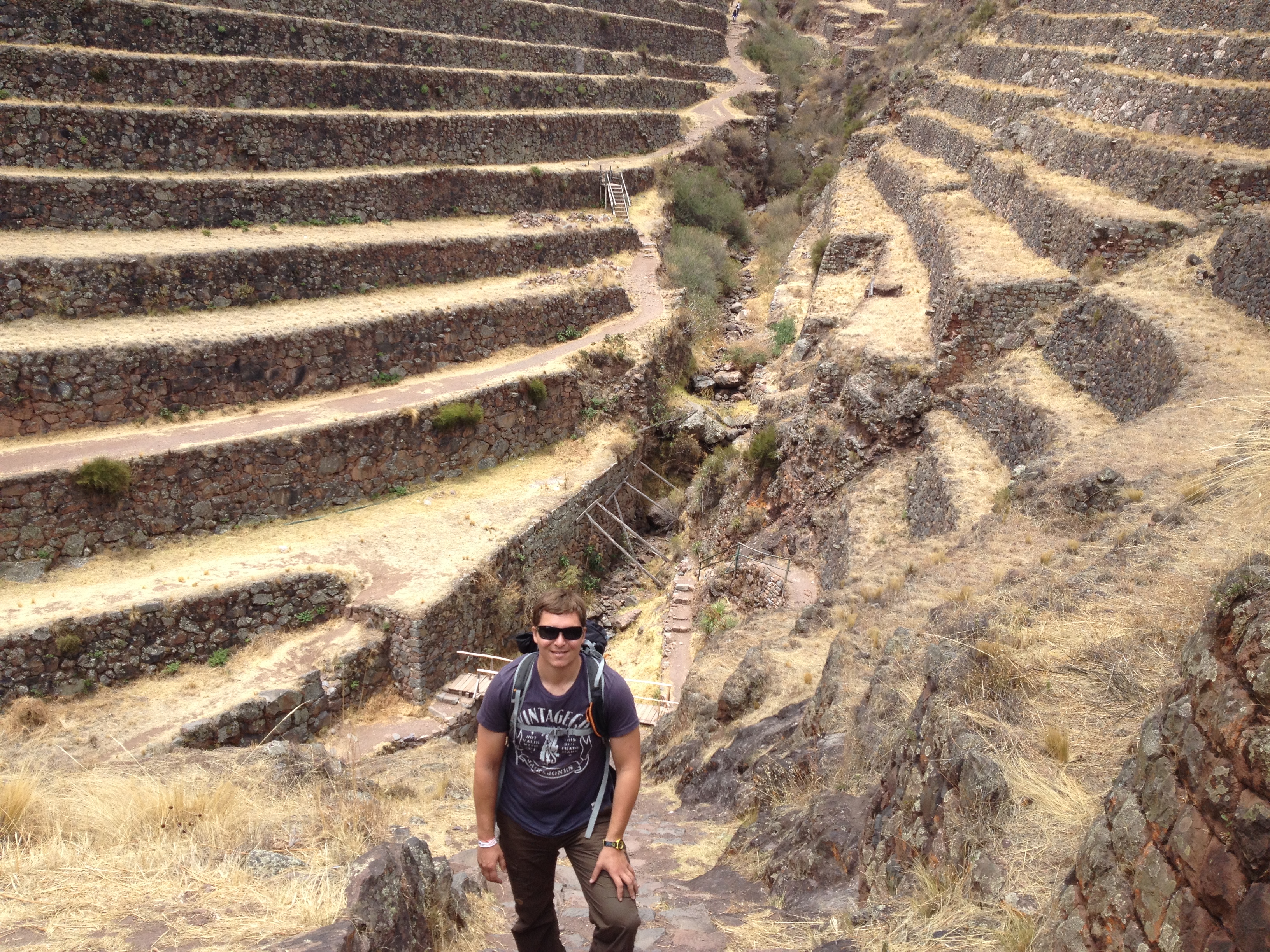 On the top of the terraces we enjoyed this view.
On the top of the terraces we enjoyed this view. 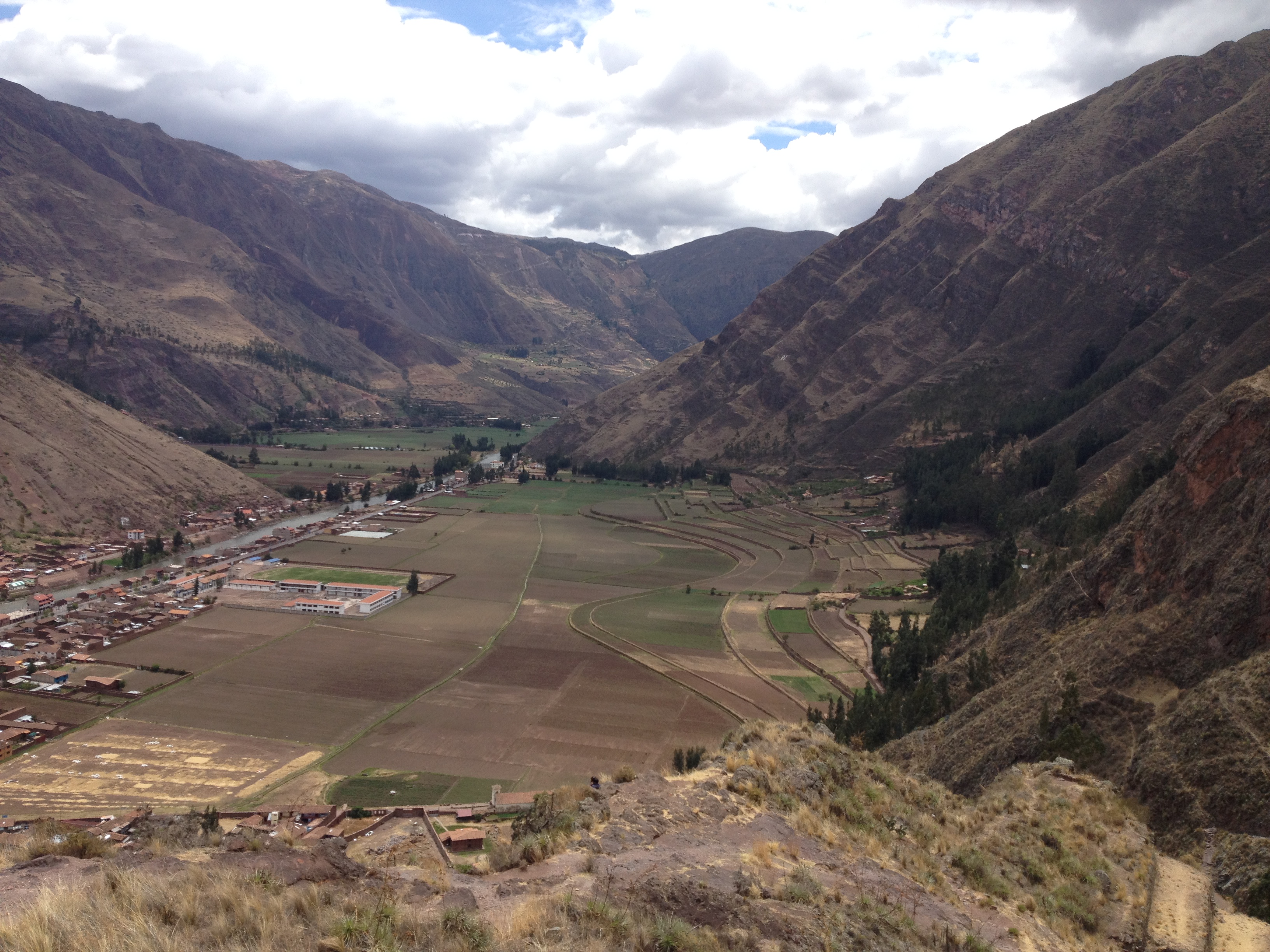 Then we climbed further up on the hill on some very narrow steps. The Incas must have had very small feet, not like Kasper's.
Then we climbed further up on the hill on some very narrow steps. The Incas must have had very small feet, not like Kasper's. 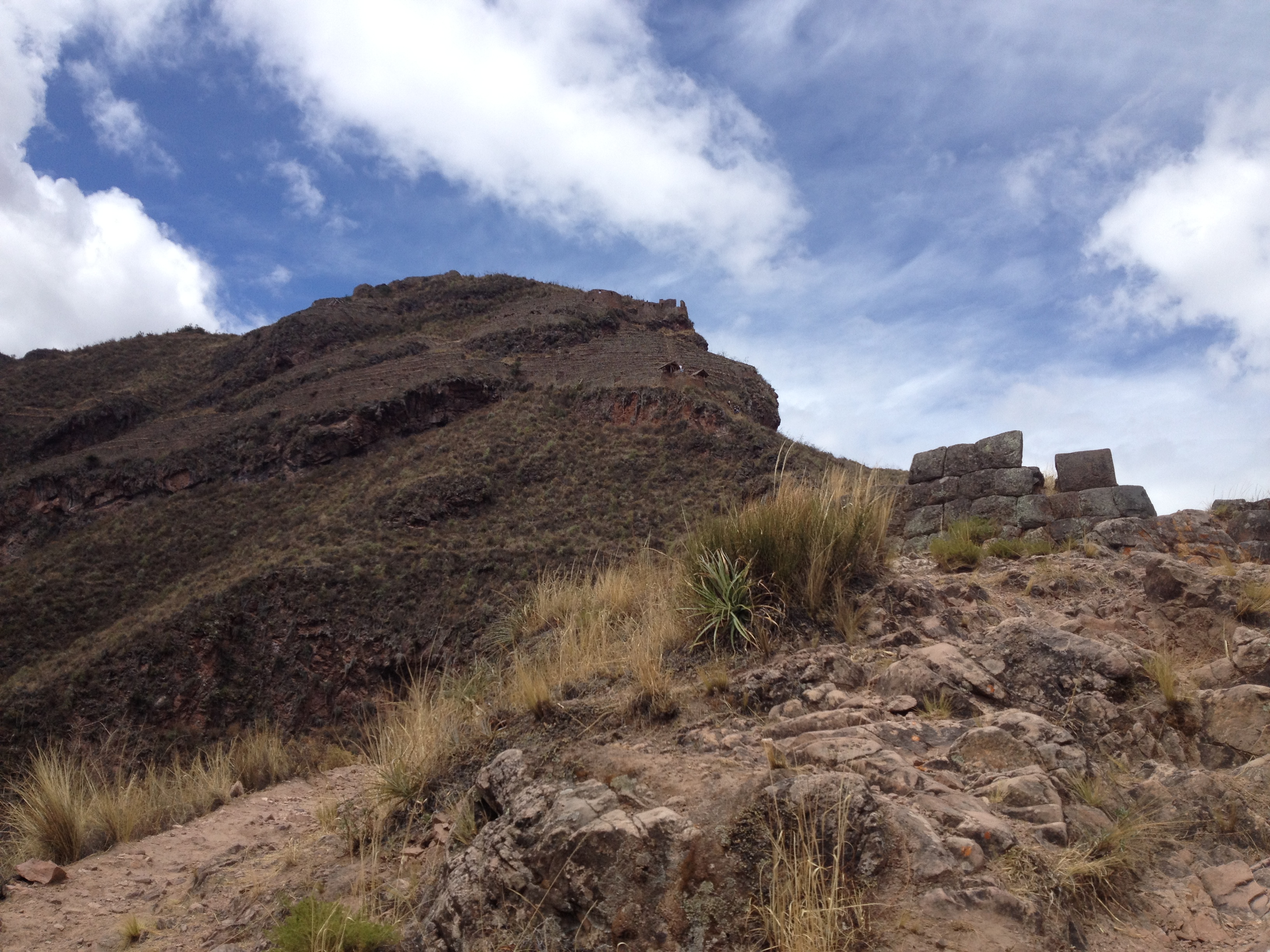
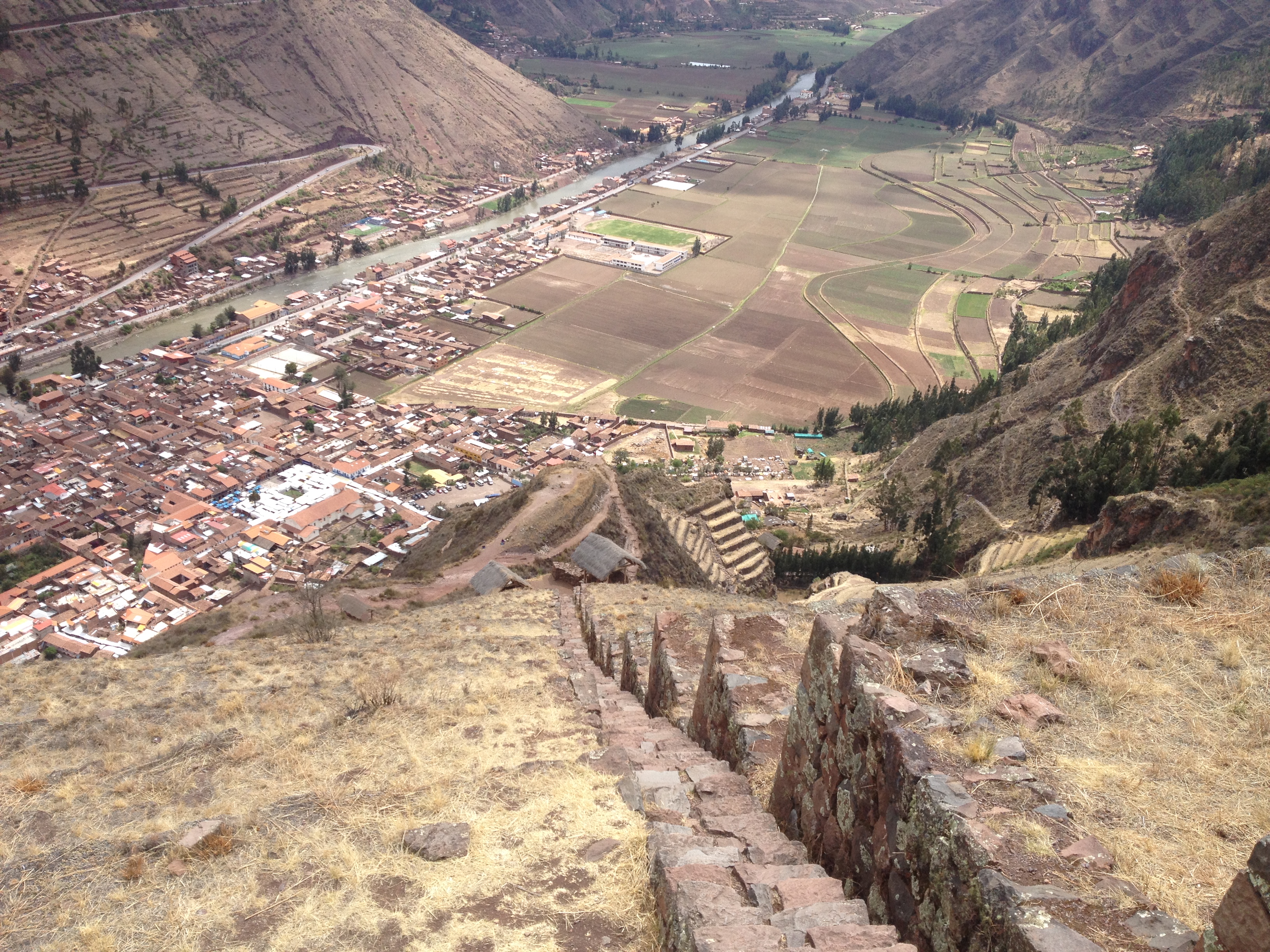 On the top of this next section of terraces there were some ruins, but we did not know what they supposed to be, as there was no sign with information, neither got we a map at the entrance. A minus point for Ministerio de Cultura!
On the top of this next section of terraces there were some ruins, but we did not know what they supposed to be, as there was no sign with information, neither got we a map at the entrance. A minus point for Ministerio de Cultura!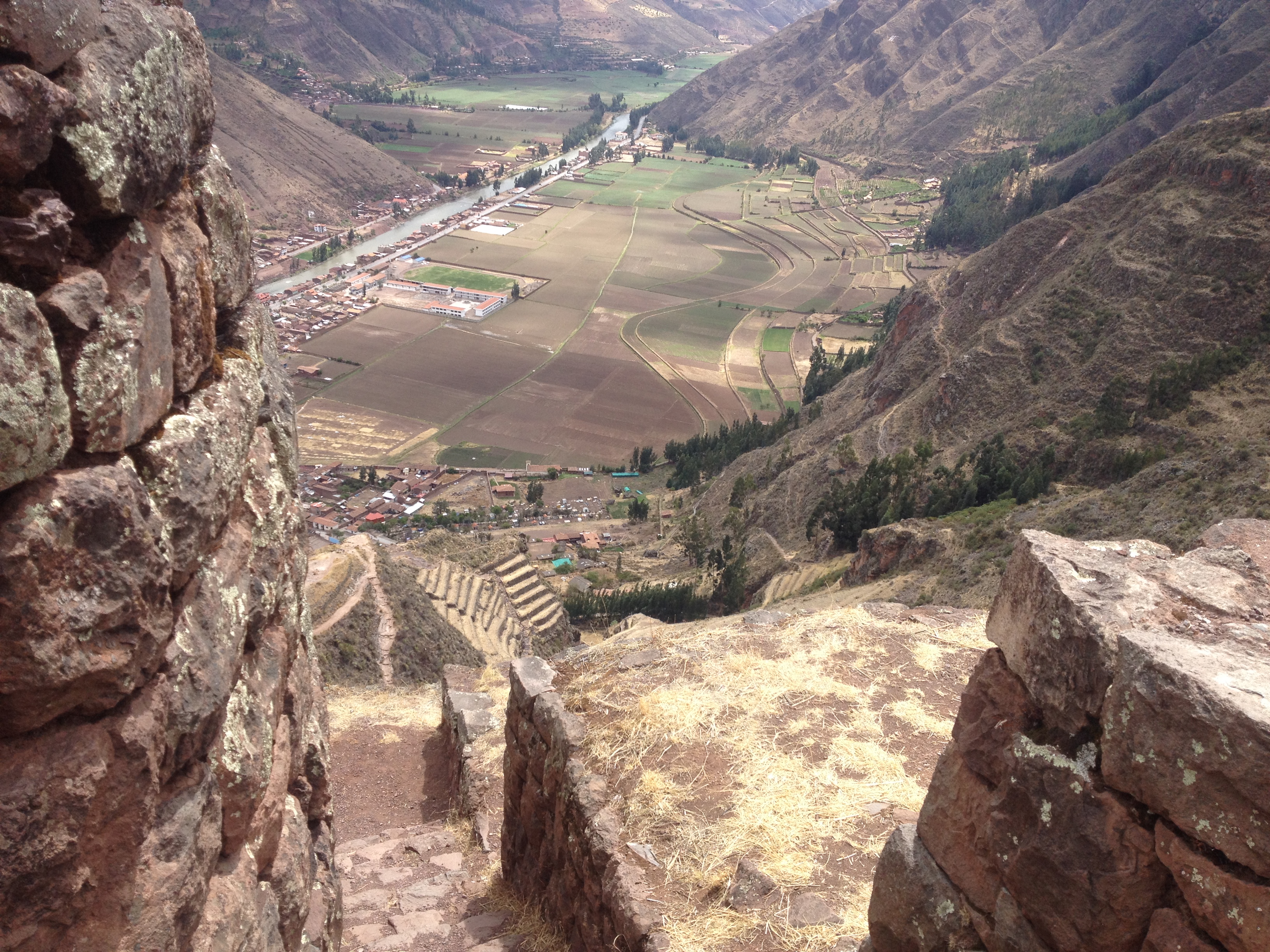
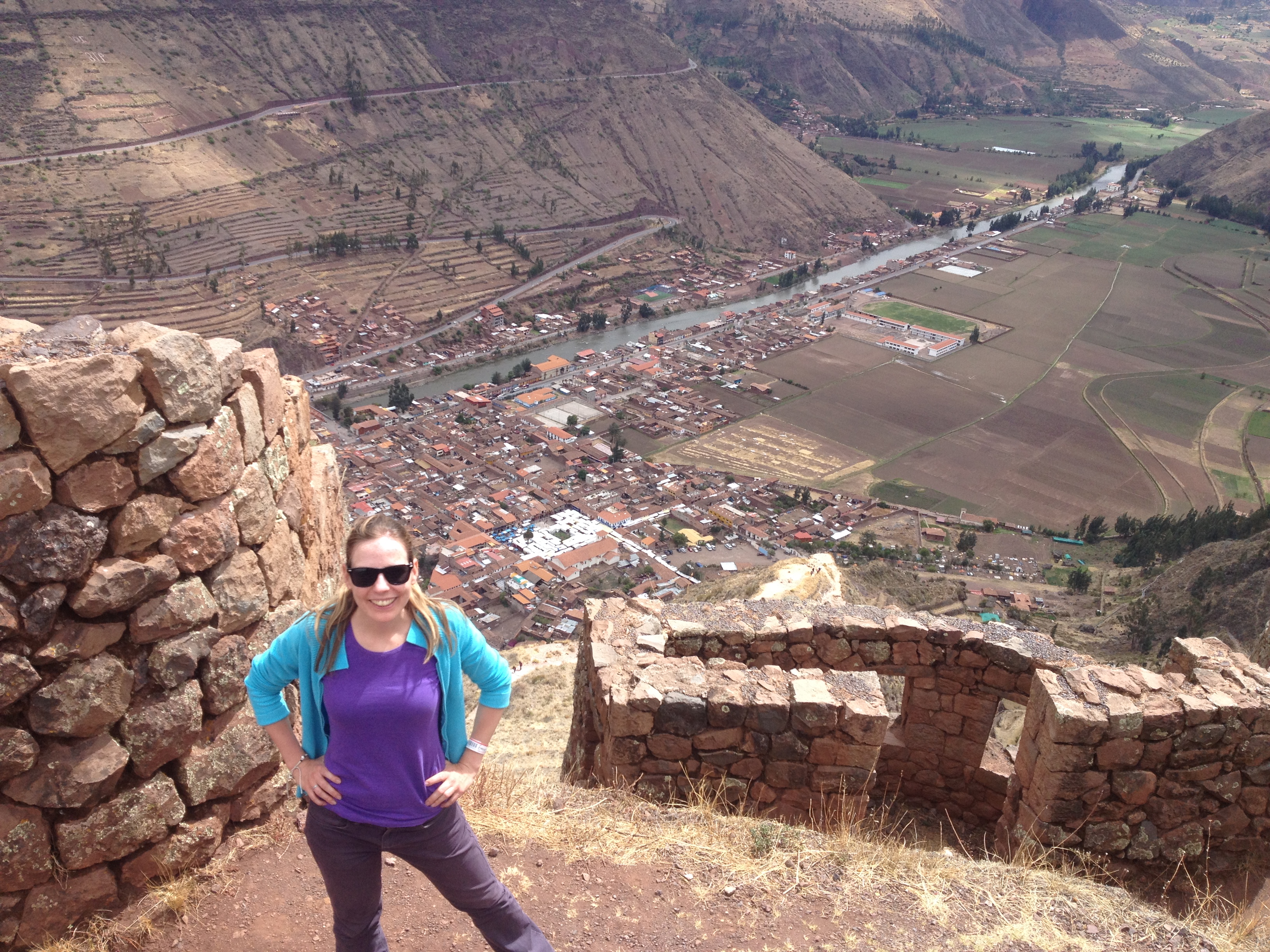 After a while we realized that we are not on the top of the citadel yet and there is much more climbing ahead of us. We had no other choice, we continued uphill.
After a while we realized that we are not on the top of the citadel yet and there is much more climbing ahead of us. We had no other choice, we continued uphill.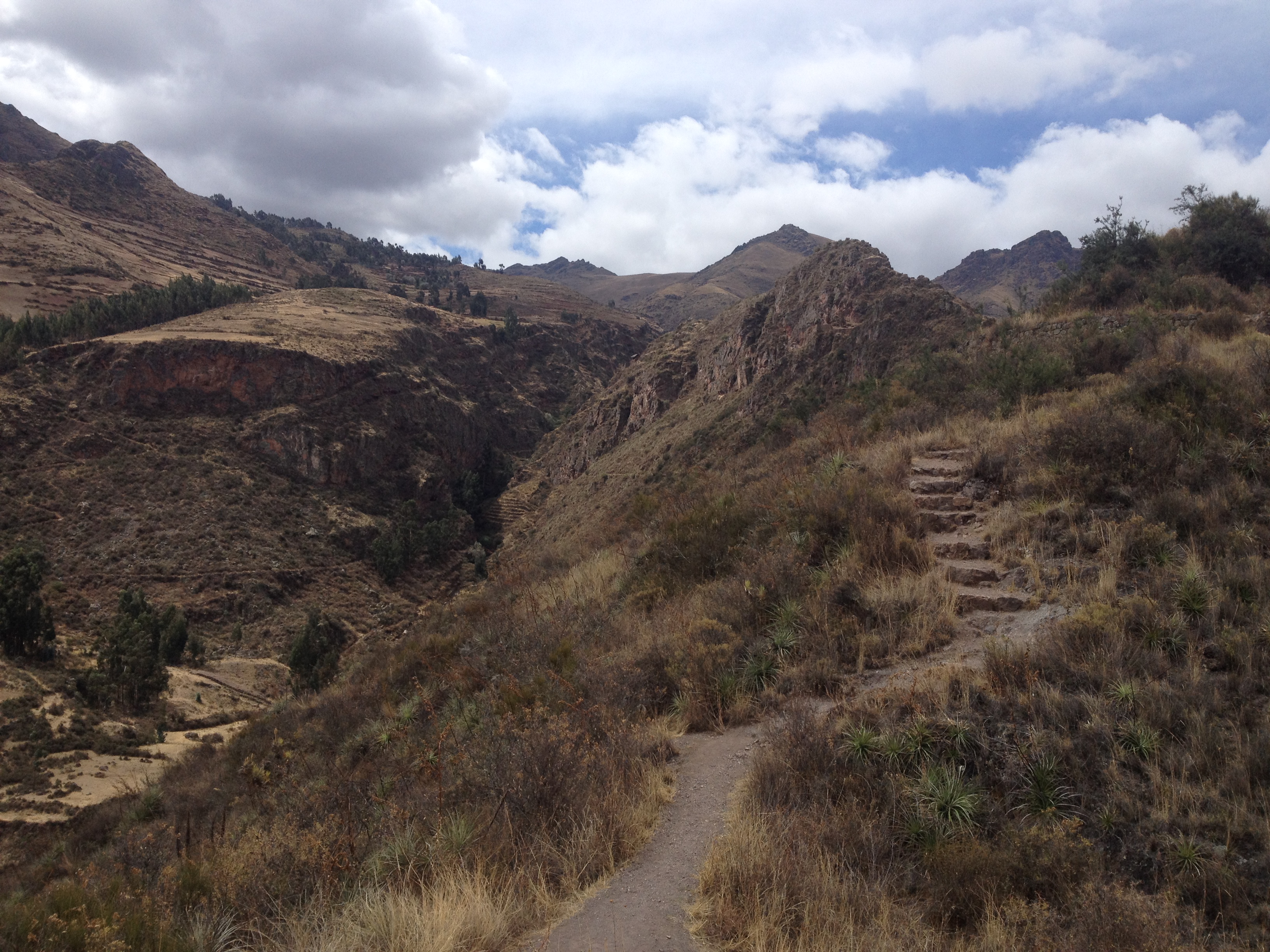
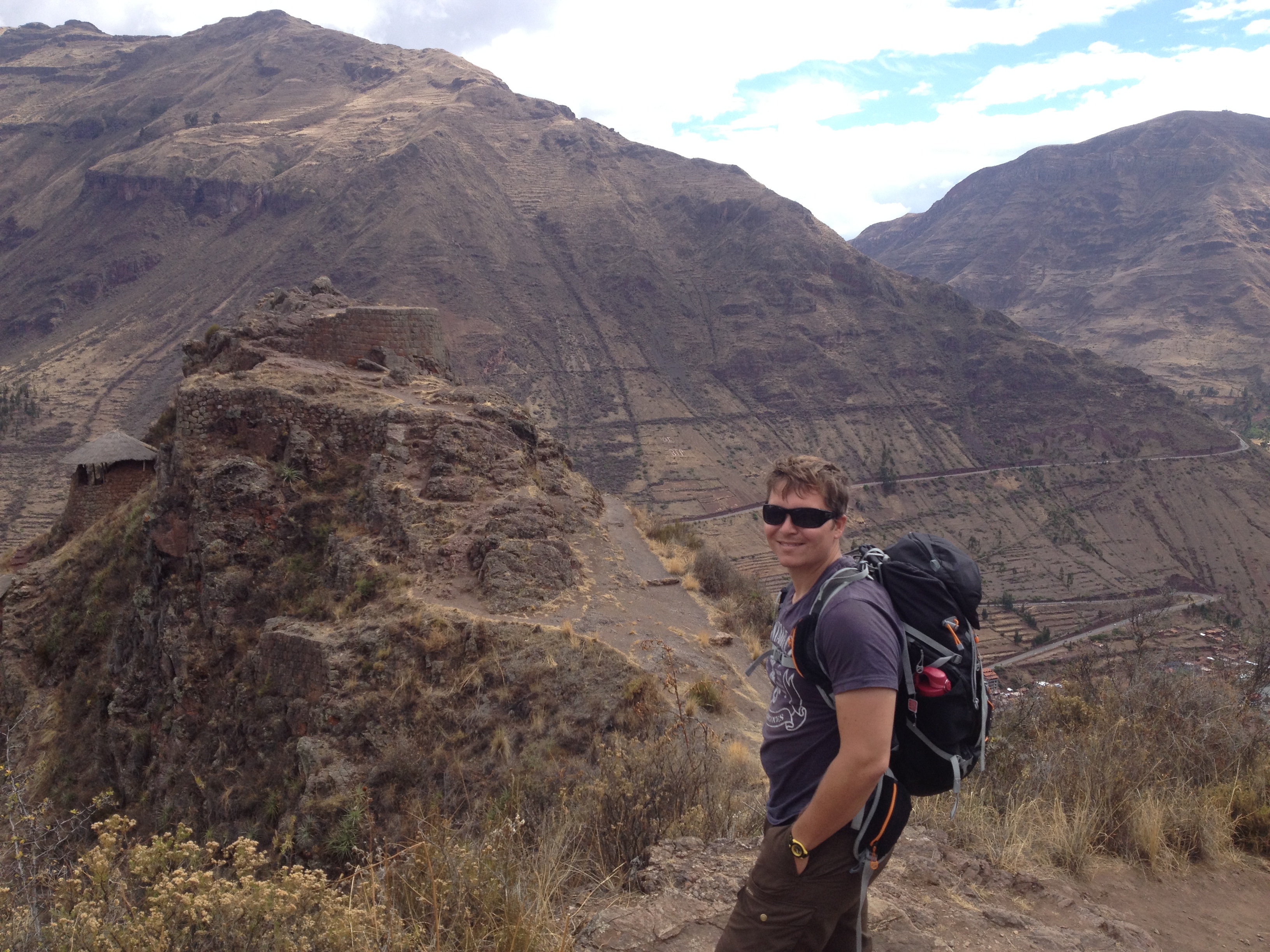 After about a half an hour we arrived to a temple complex featuring a sun temple, ceremonial alters, water channels and wells. There were only a few other tourists besides us, so it was very nice and relaxing there.
After about a half an hour we arrived to a temple complex featuring a sun temple, ceremonial alters, water channels and wells. There were only a few other tourists besides us, so it was very nice and relaxing there.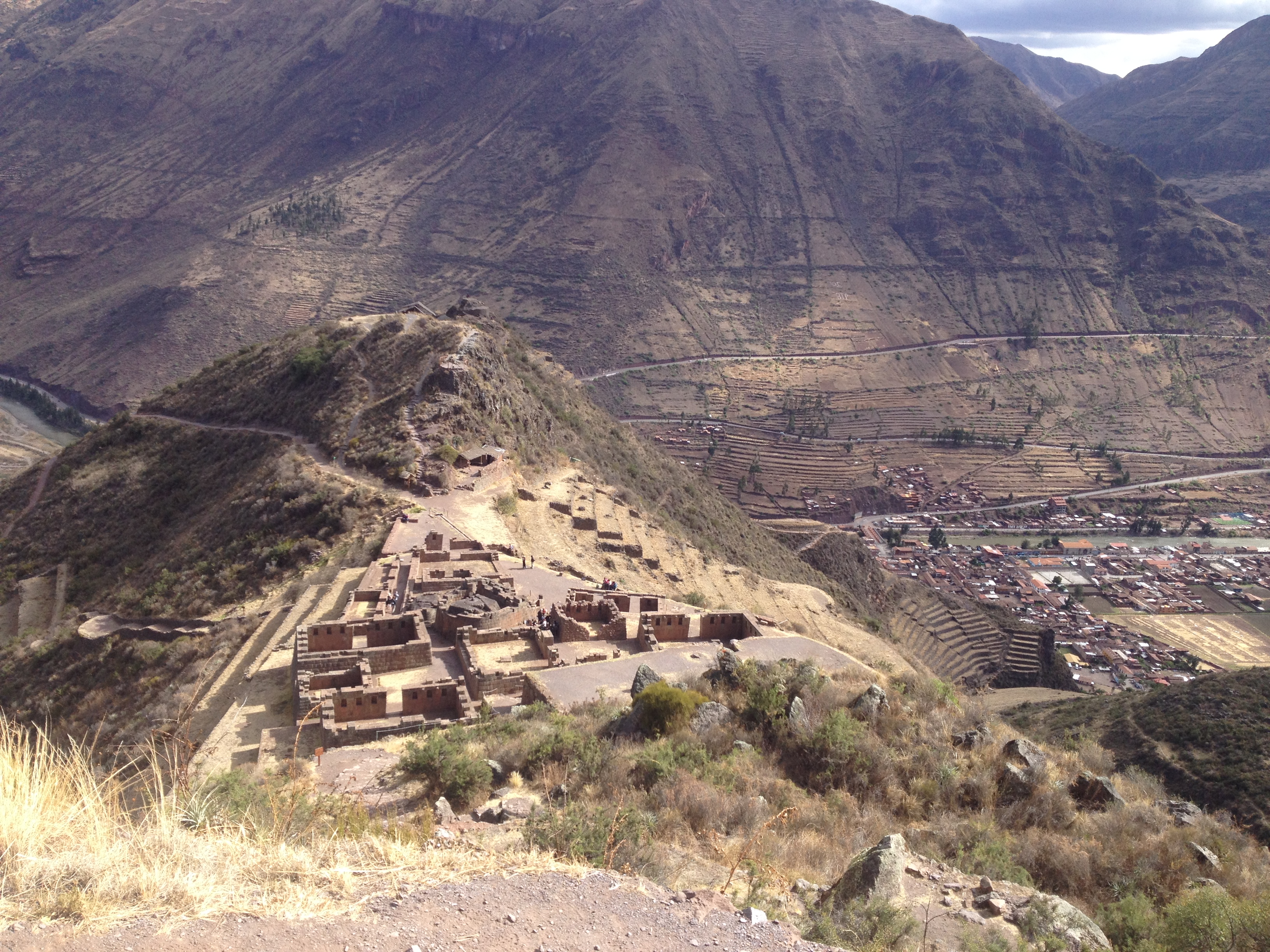

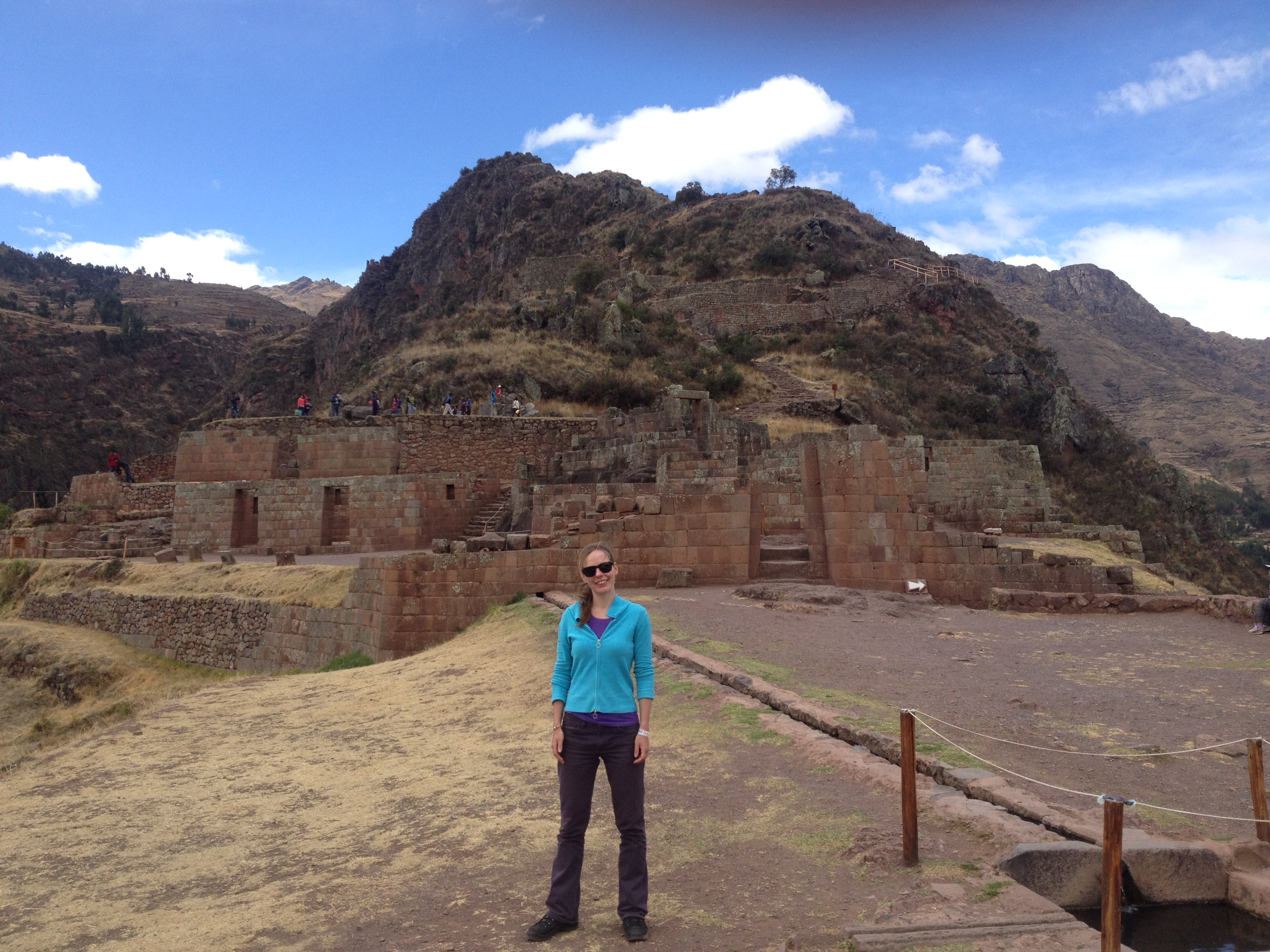
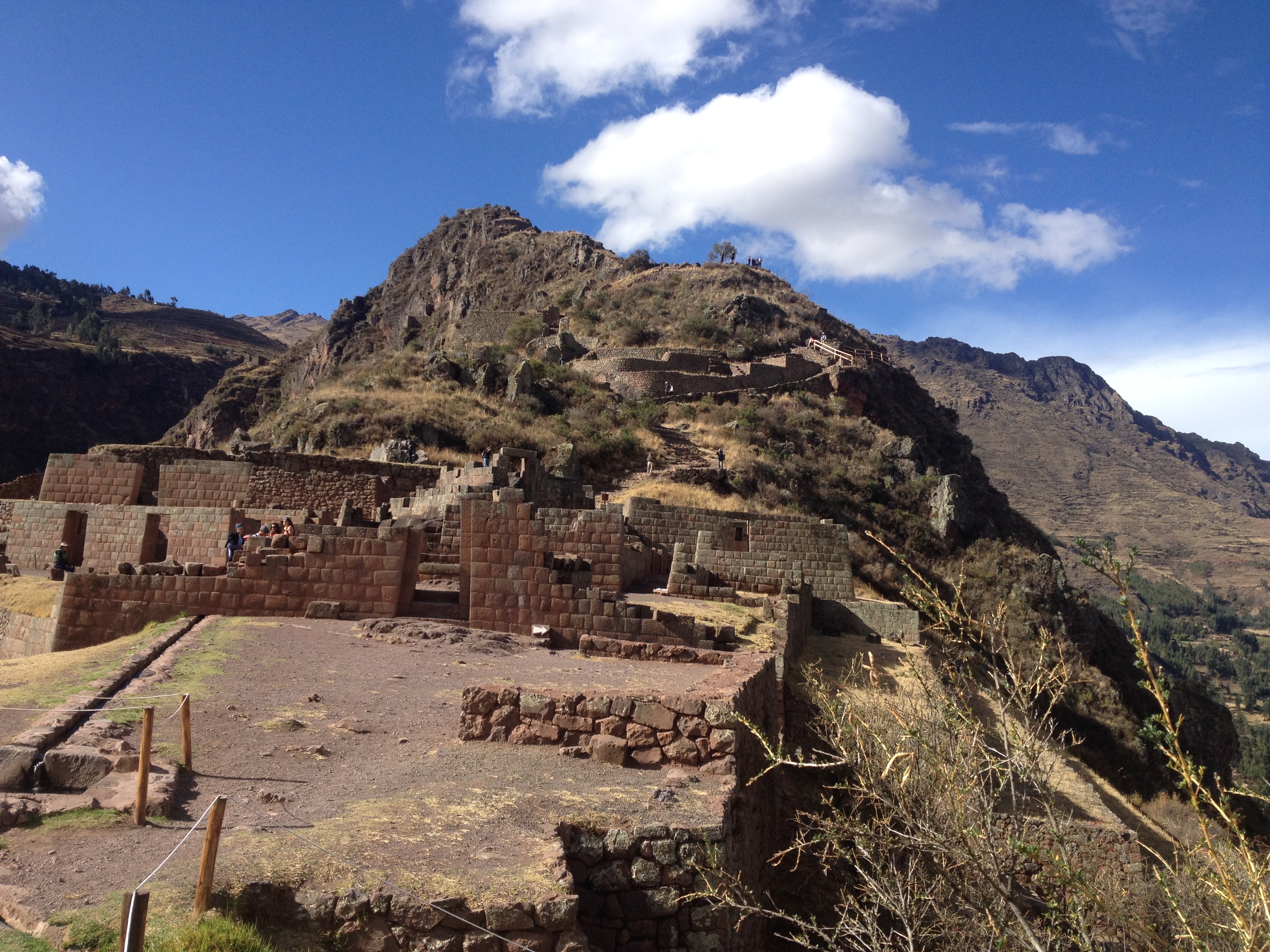
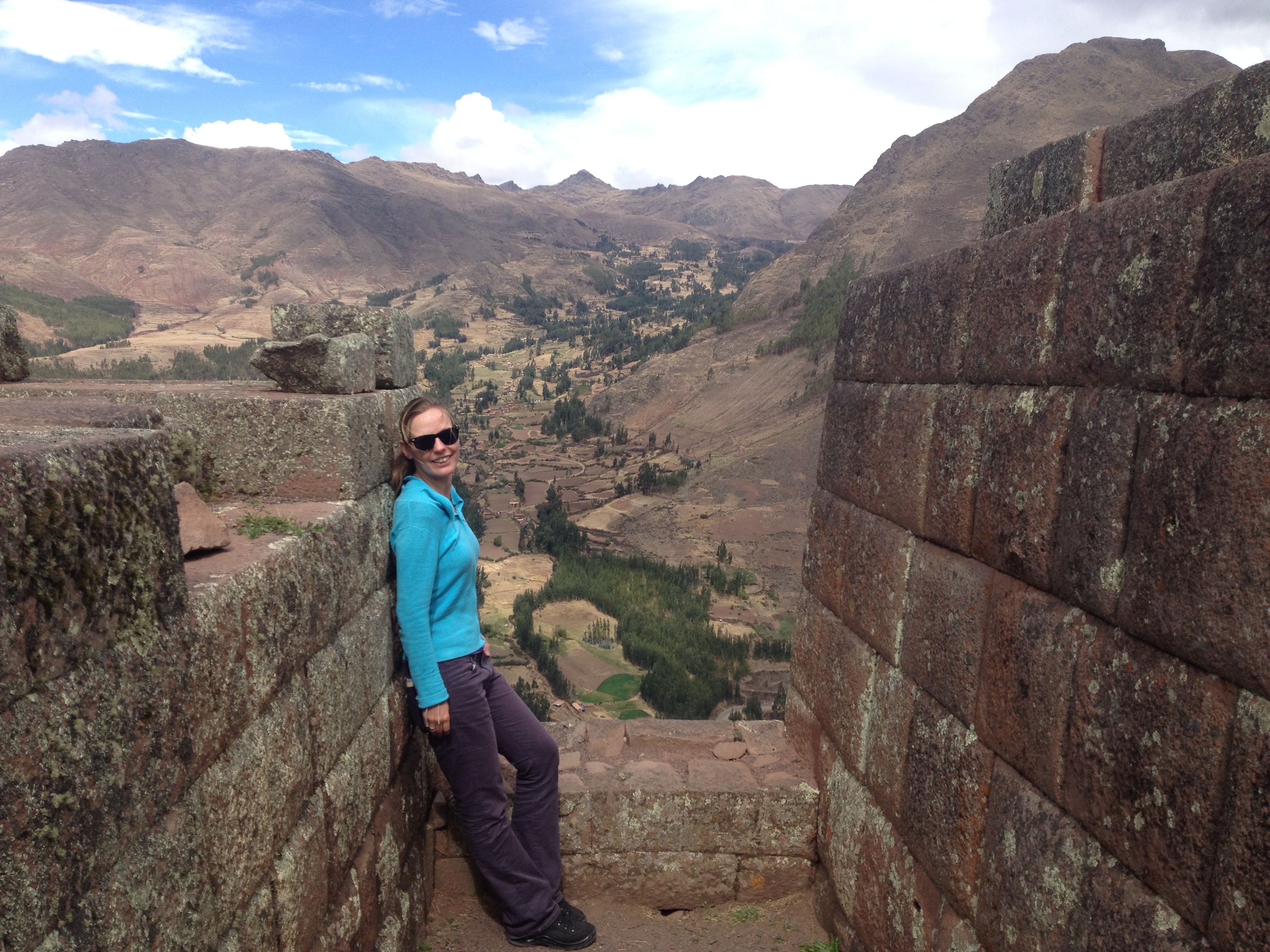 From the sun temple we noticed a beautiful urban area located on a semi-circular ledge surrounded by agricultural terraces. We had to climb down there to check it out.
From the sun temple we noticed a beautiful urban area located on a semi-circular ledge surrounded by agricultural terraces. We had to climb down there to check it out.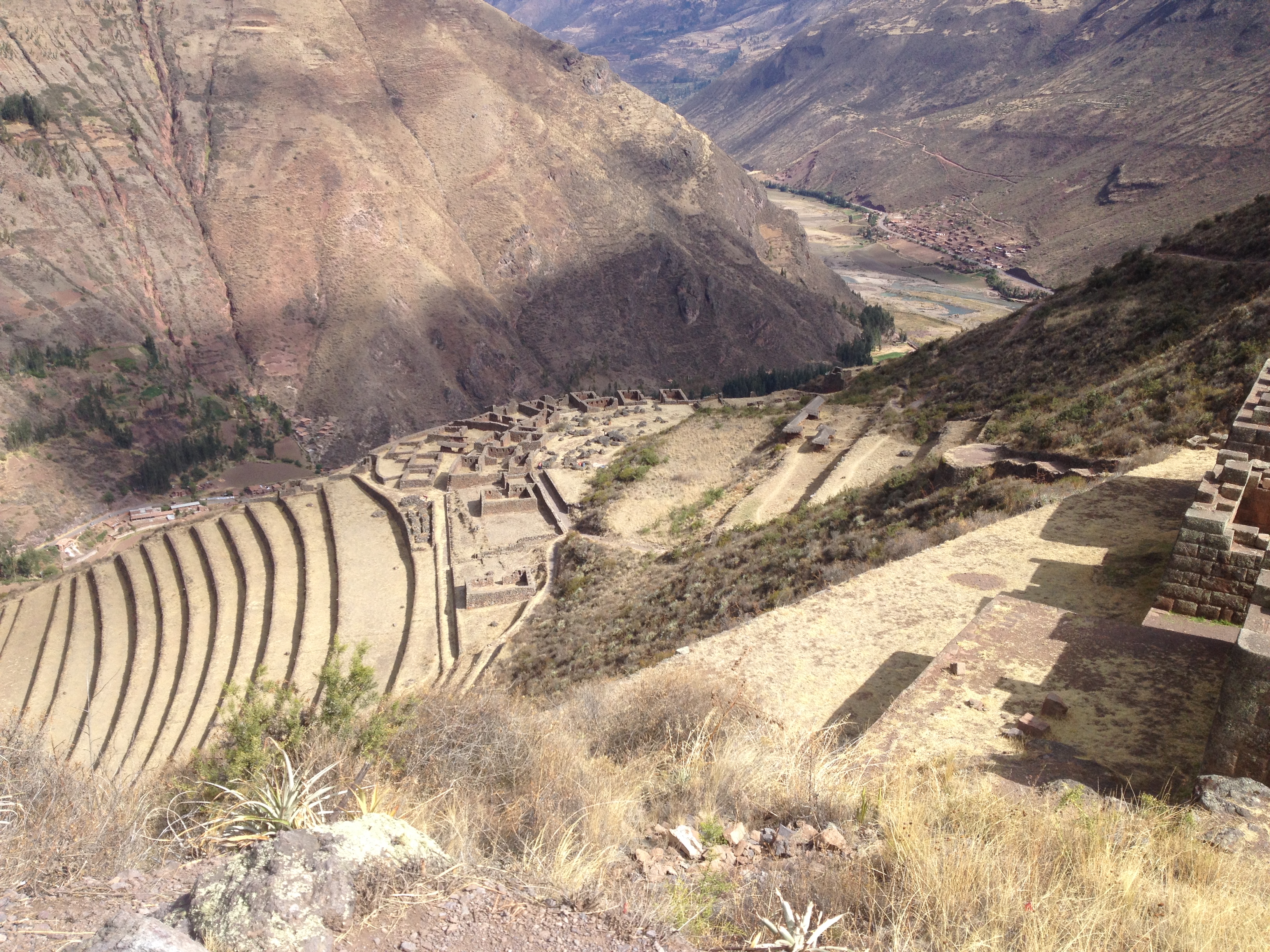
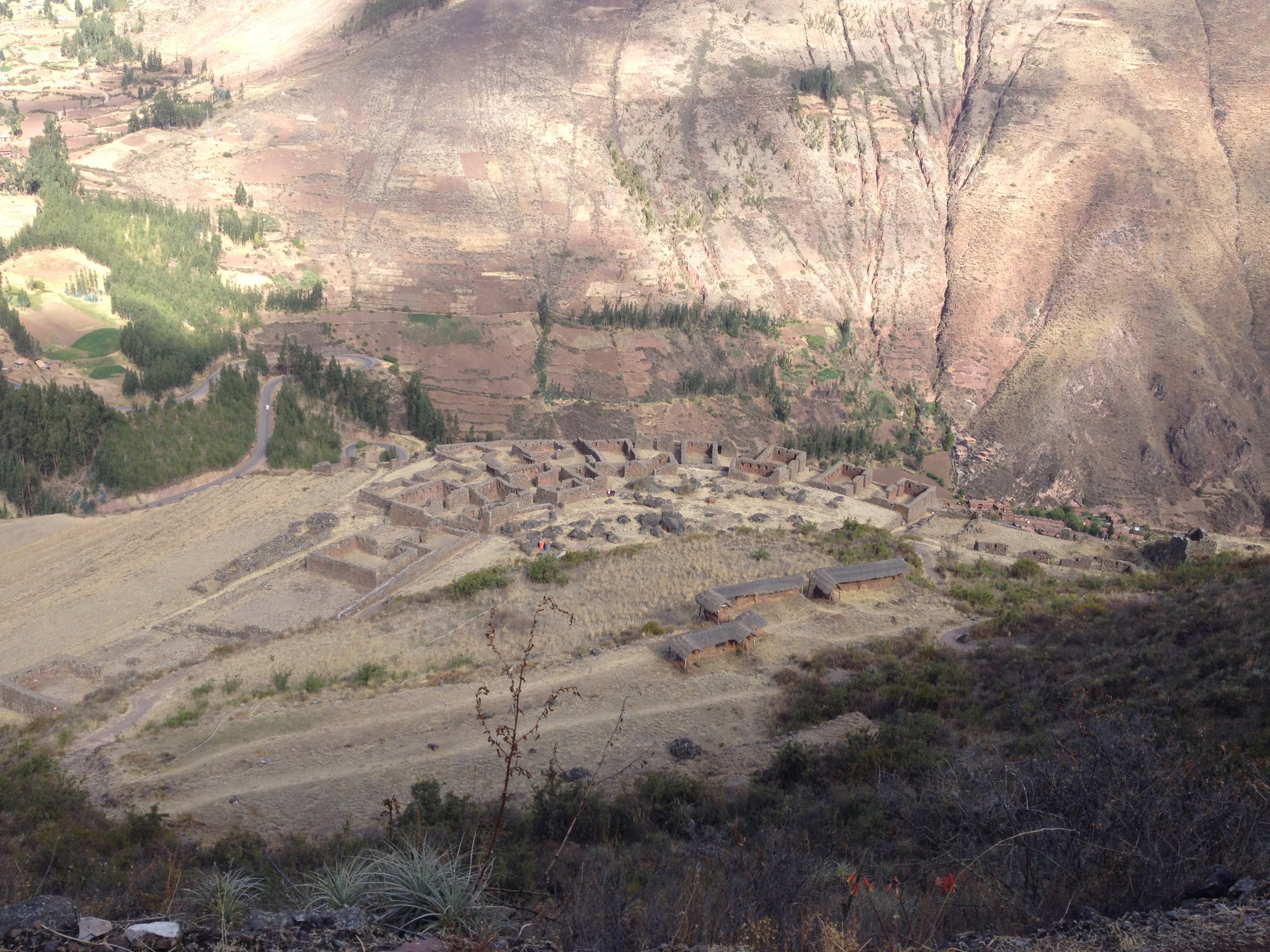
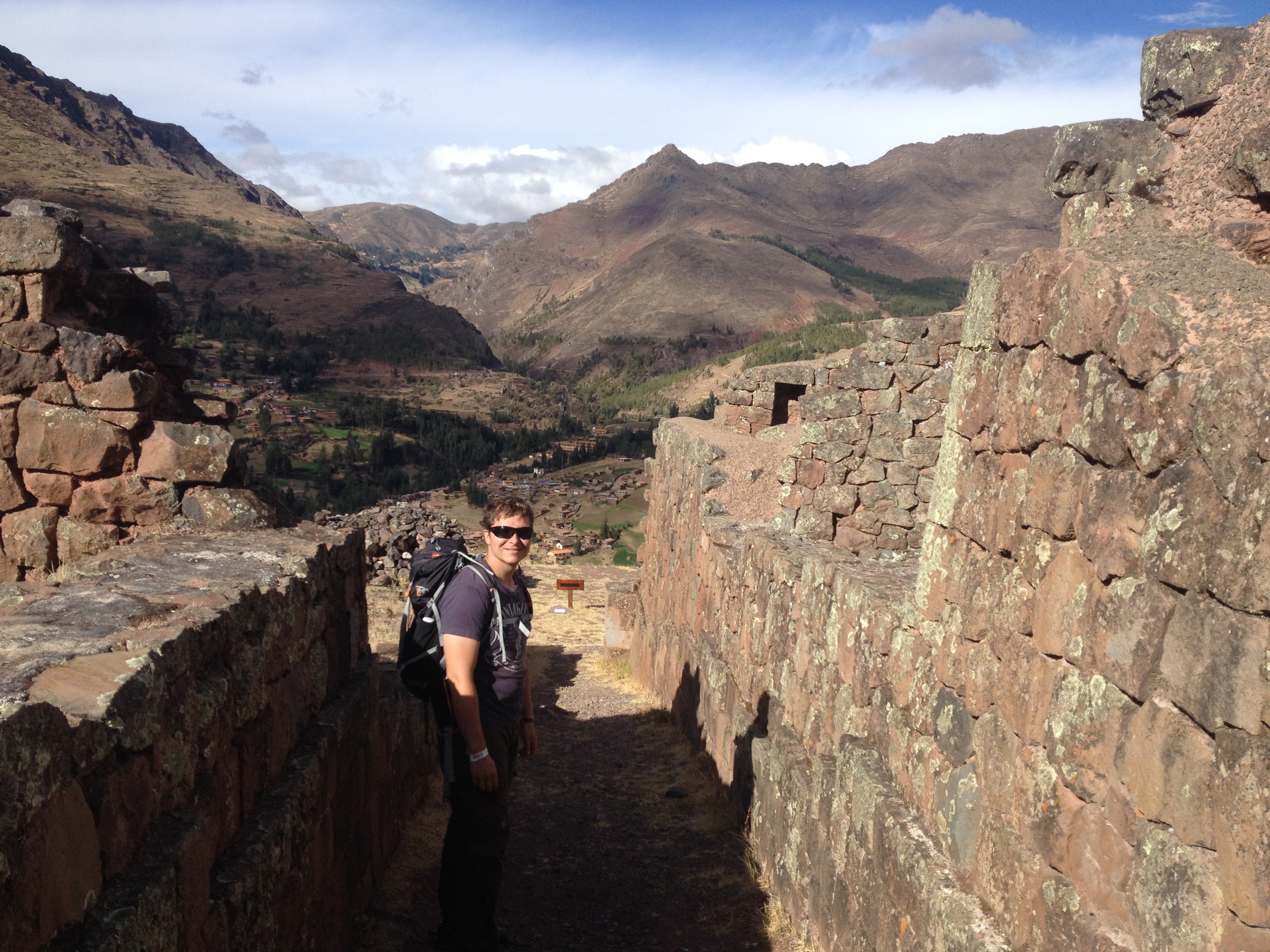
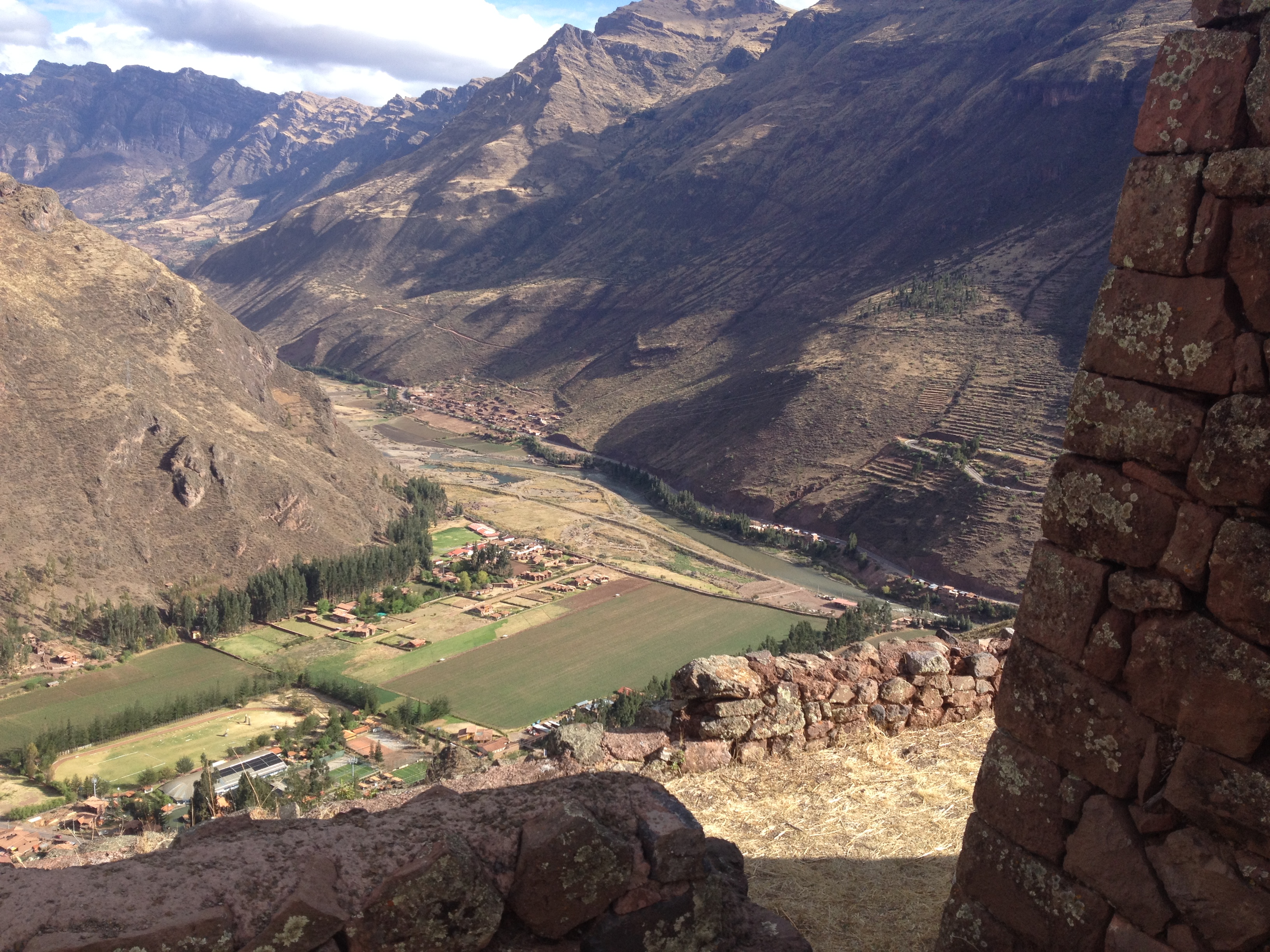 By then it got quite late, so we needed to get back to the village to catch our colectivo to Cusco. Can you see the river down there? Yes, we needed to get all the way down to the river. Luckily we found another trail, so we did not need to descend through those very narrow stairs.
By then it got quite late, so we needed to get back to the village to catch our colectivo to Cusco. Can you see the river down there? Yes, we needed to get all the way down to the river. Luckily we found another trail, so we did not need to descend through those very narrow stairs.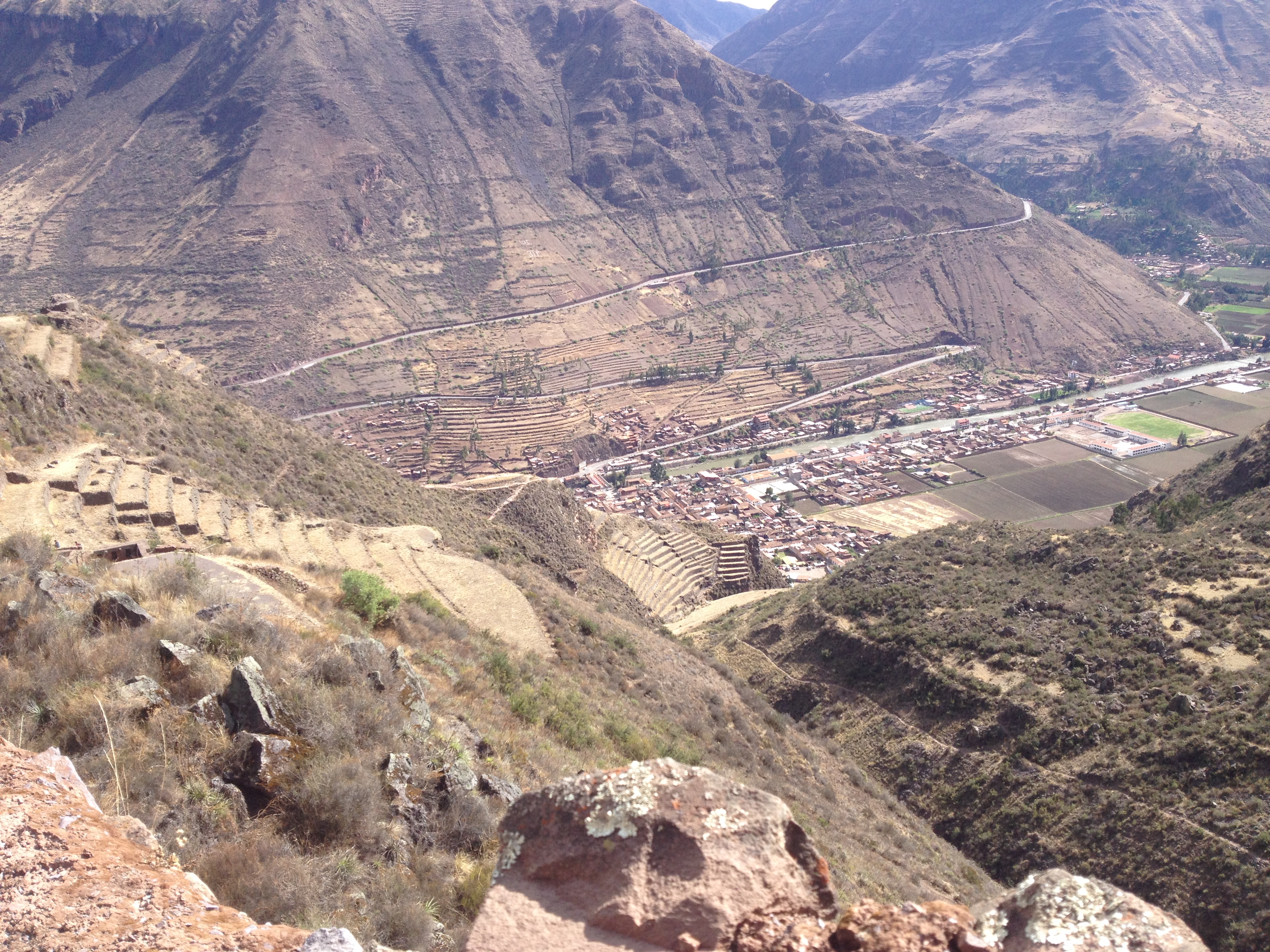 Pisac ruins are considered to be one of the finest remaining Inca archeologic sites in Peru, and rightly so. The ruins have a beautiful location; high above the valley floor they harmoniously blend into the natural curvature of the landscape. One can easily spend a whole day wandering among the ruins and imagine how the Incas lived there.
Pisac ruins are considered to be one of the finest remaining Inca archeologic sites in Peru, and rightly so. The ruins have a beautiful location; high above the valley floor they harmoniously blend into the natural curvature of the landscape. One can easily spend a whole day wandering among the ruins and imagine how the Incas lived there.
Ollantaytambo
The town of Ollantaytambo is on the way to Machu Picchu both by train and by the famous Inca Trail, and I guess that is the reason why it is more visited compared to Pisac. Or maybe because the ruins here are more accessible than the ones in Pisac. Anyway, the point is that there are many tourists in Ollantaytambo, so you need to visit the ruins either in the early morning or in the late afternoon.
We got to Ollantaytambo by a colectivo from Cusco which took us 2 hours, and because our next destination was Machu Picchu, we spent the night here.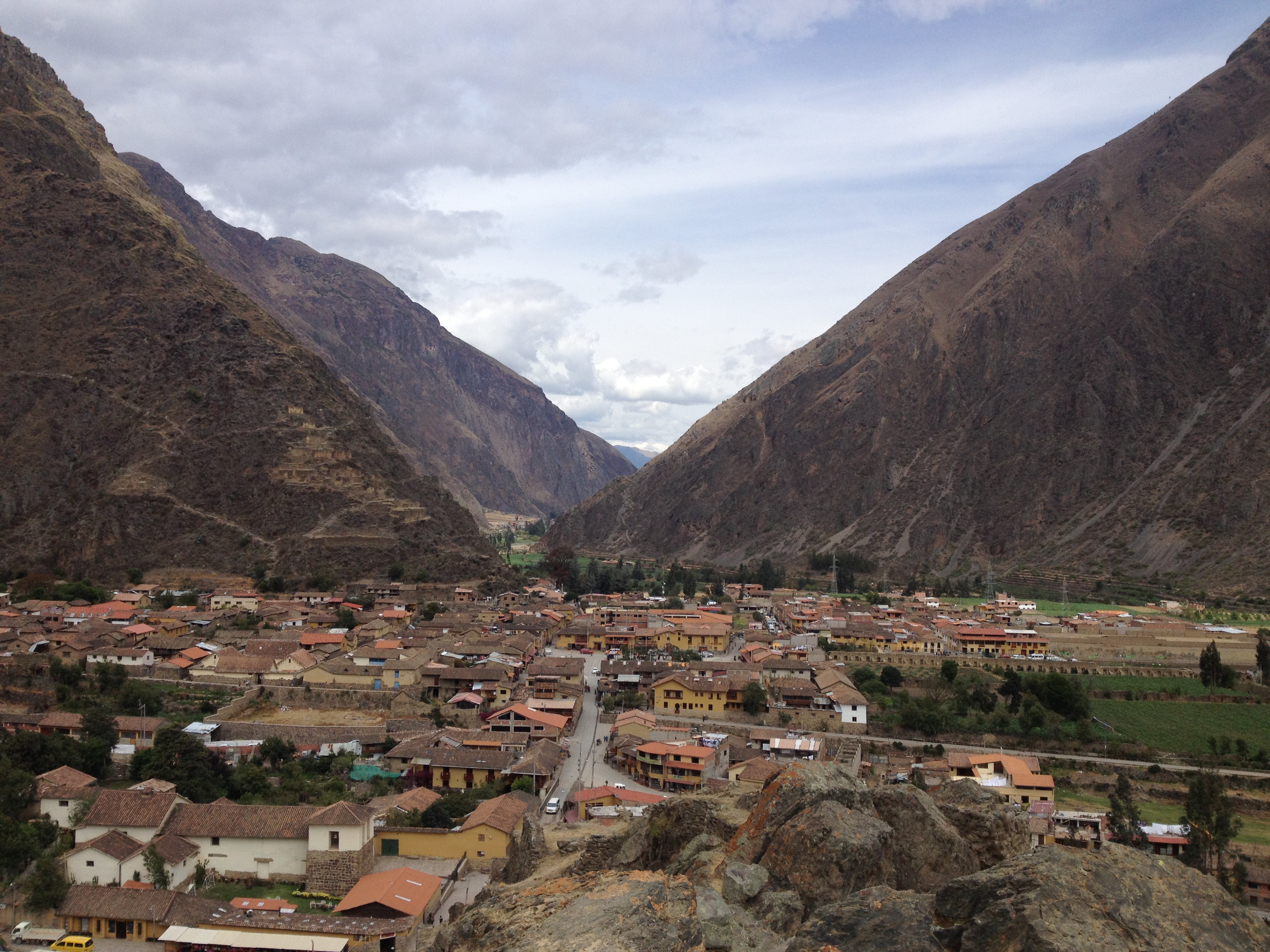 The town of Ollantaytambo is located along the Patakancha River and the Inca ruins are situated on the surrounding hills. The main attraction is the fortress and the Inca ceremonial center which were built on the top of the terraces of Cerro Bandolista. A couple of hours is enough to see this site.
The town of Ollantaytambo is located along the Patakancha River and the Inca ruins are situated on the surrounding hills. The main attraction is the fortress and the Inca ceremonial center which were built on the top of the terraces of Cerro Bandolista. A couple of hours is enough to see this site.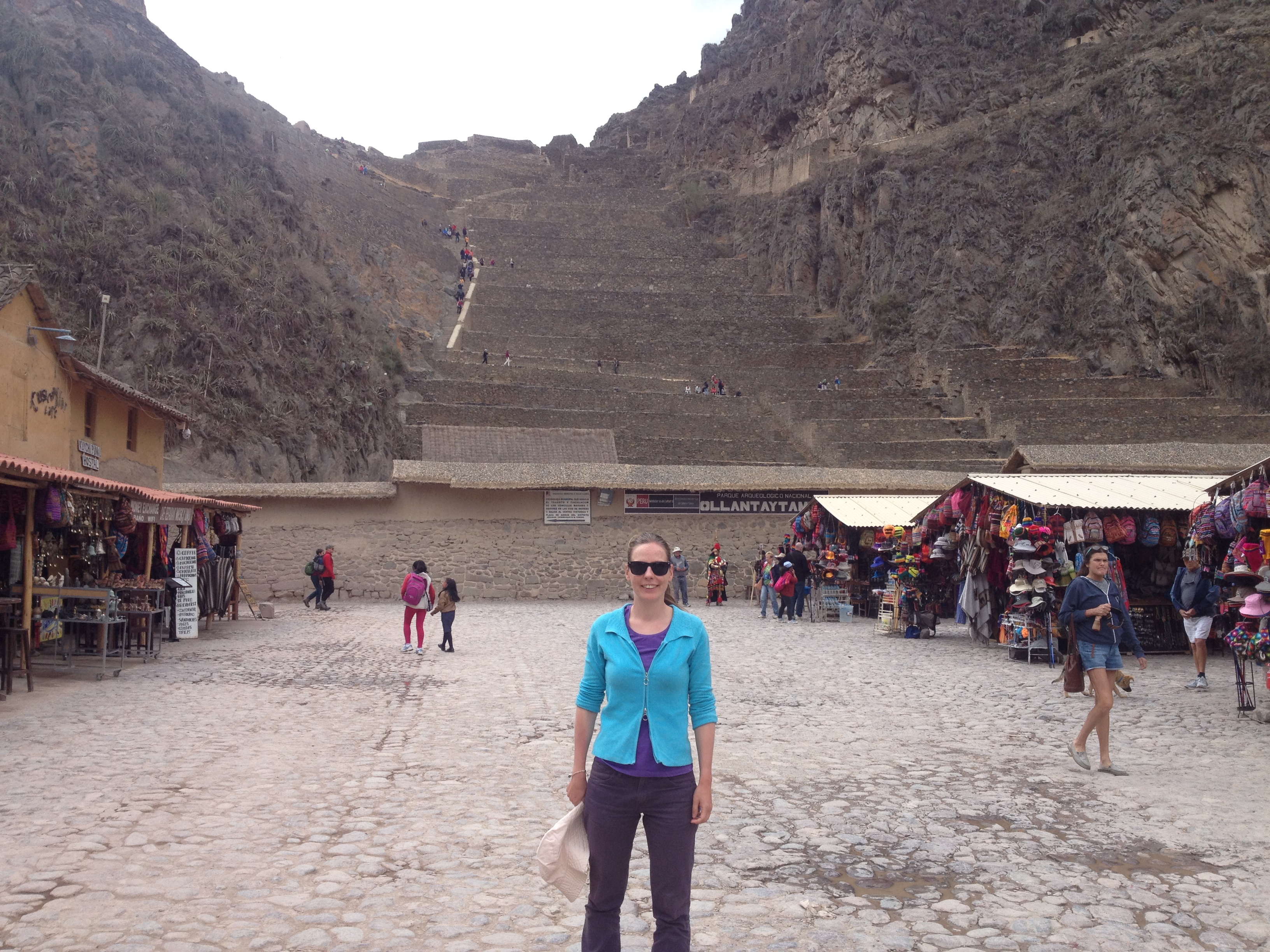
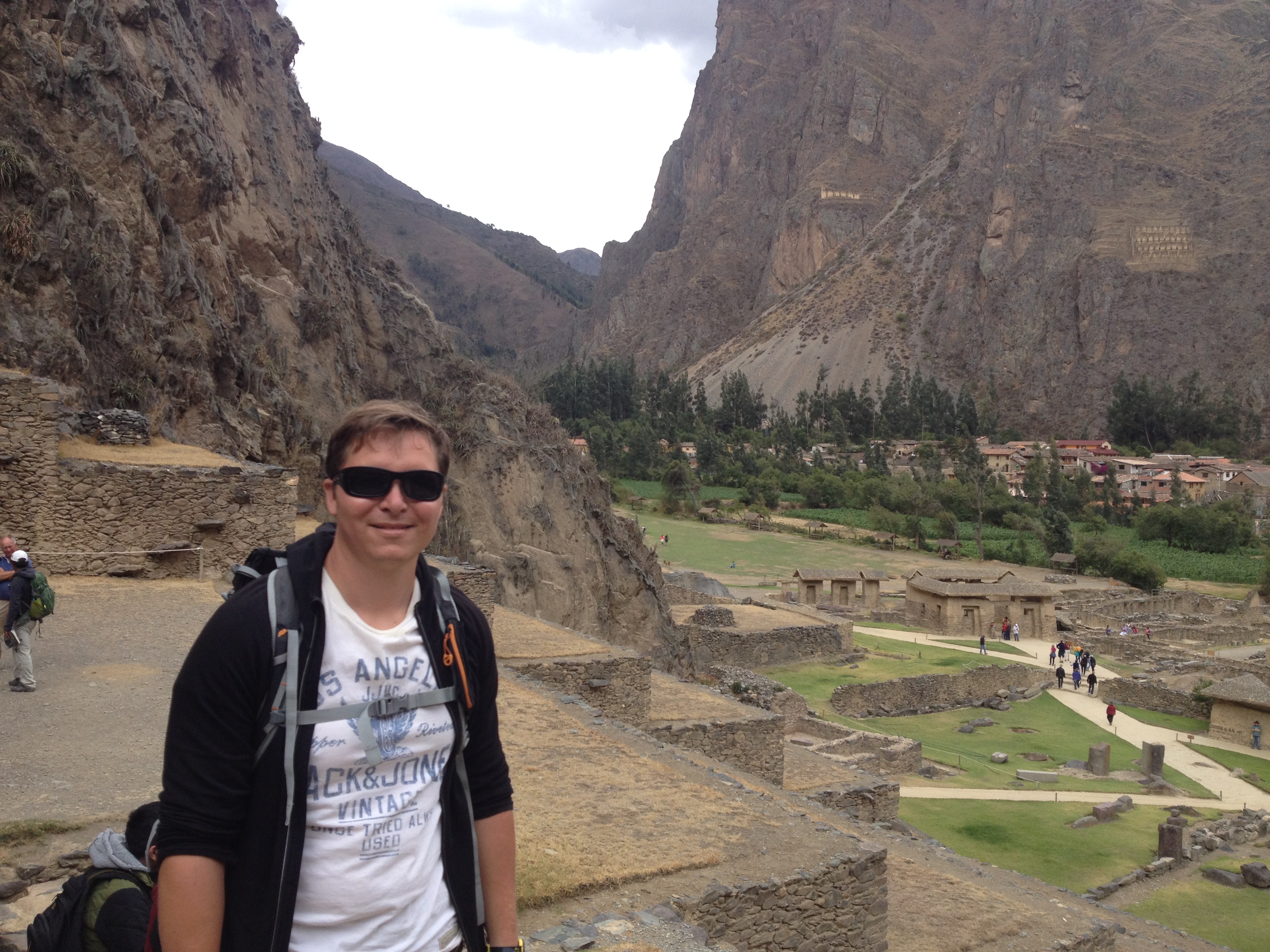
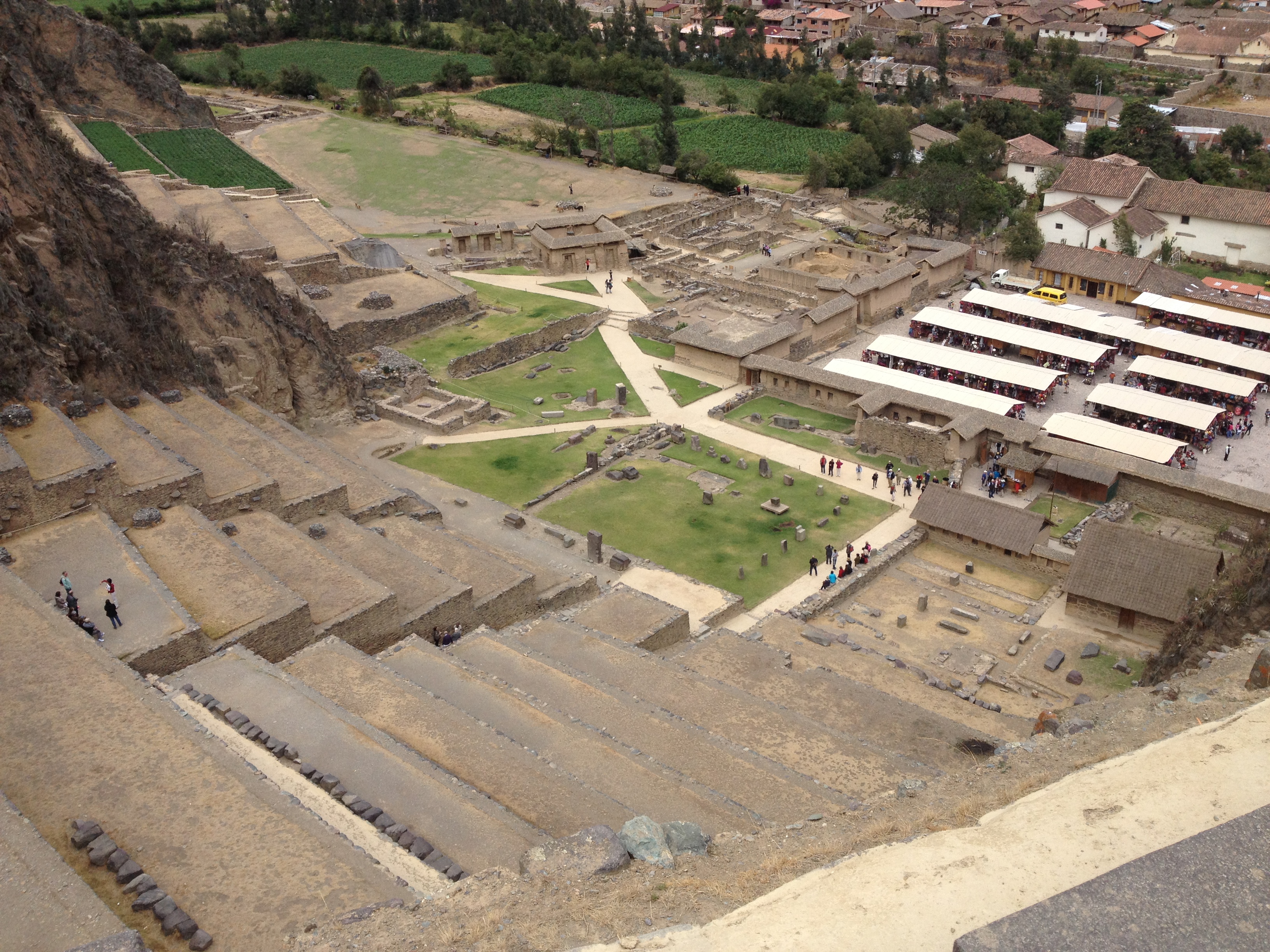
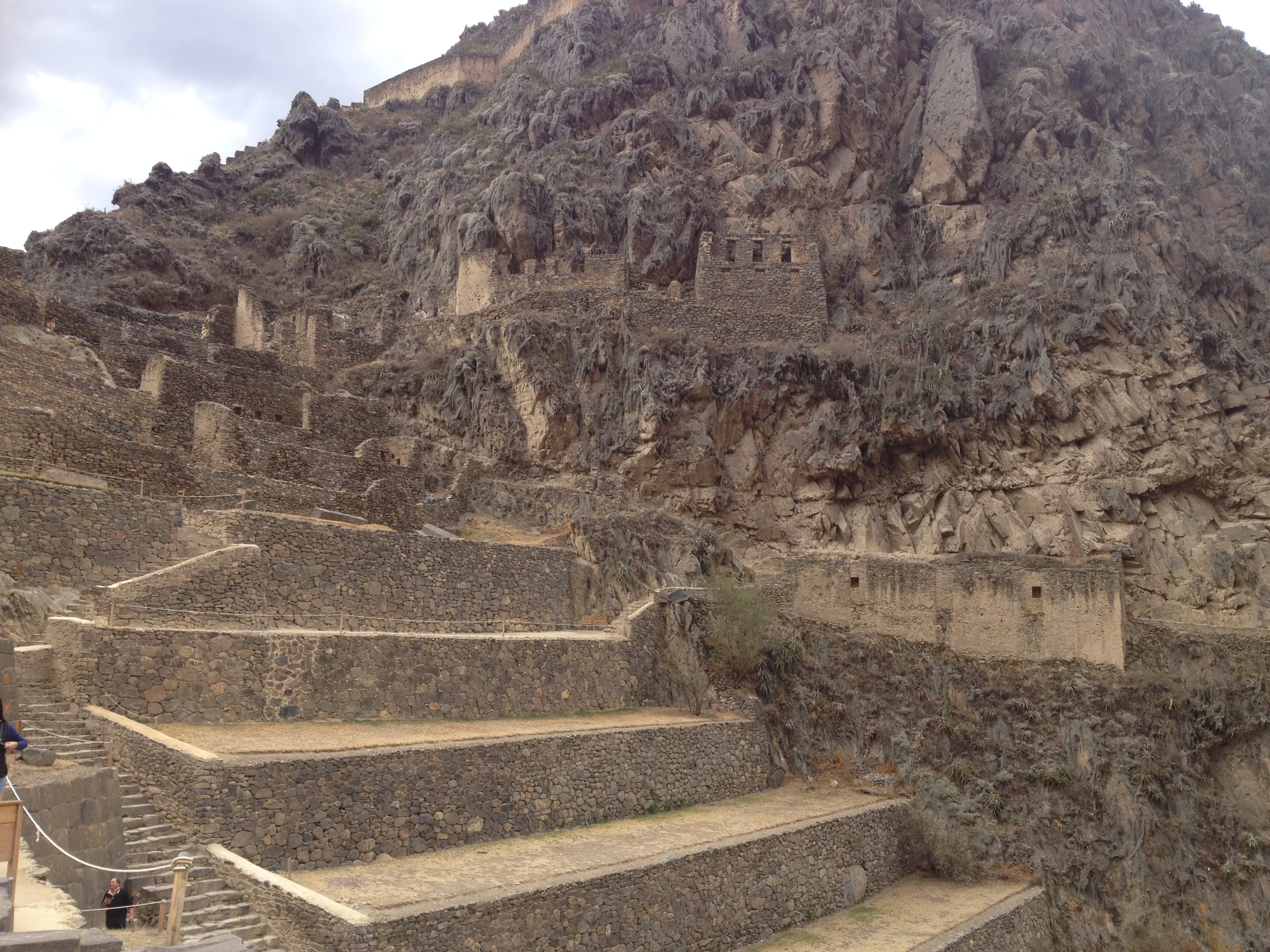
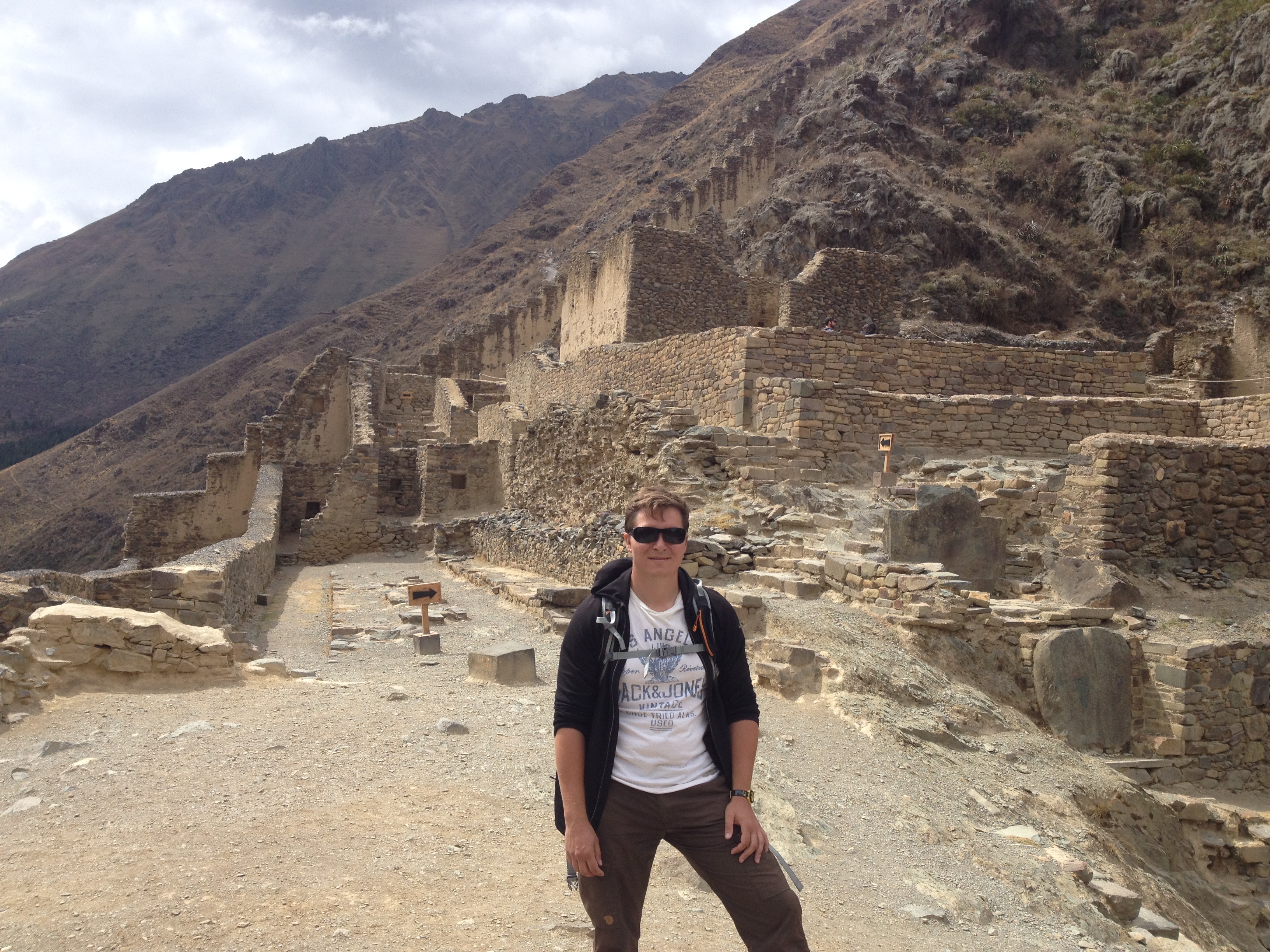
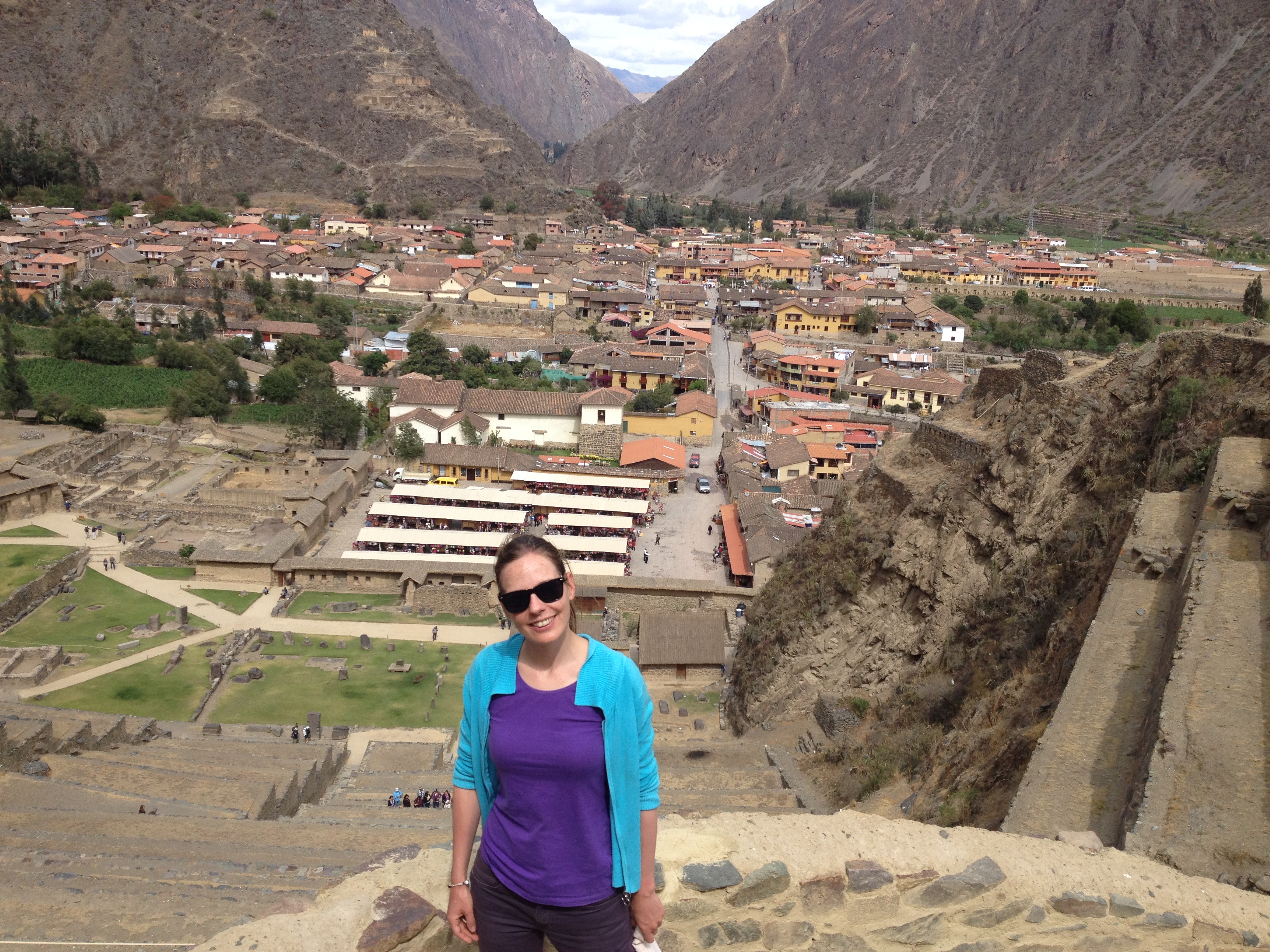
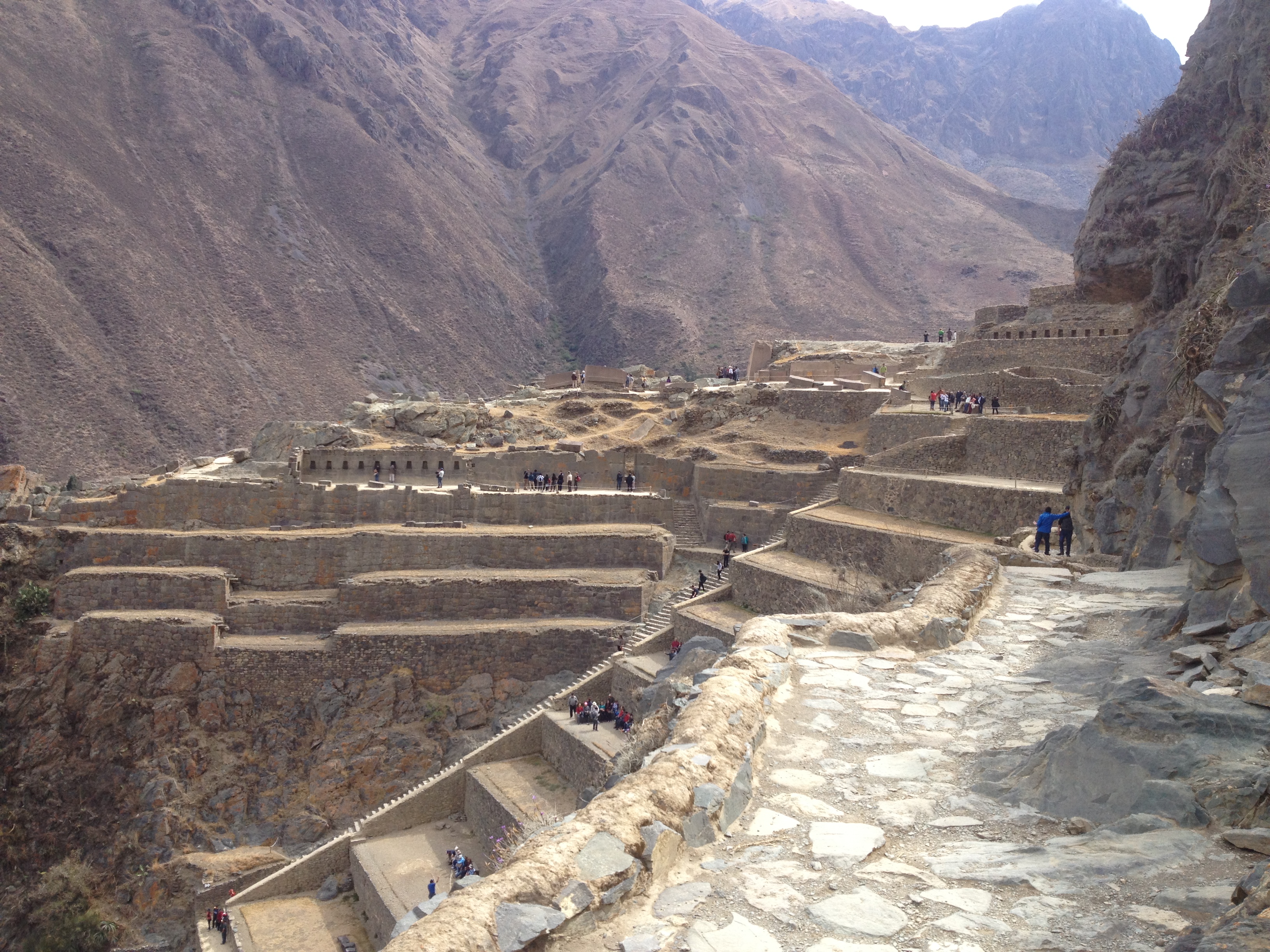 High up on the opposite side of the valley are the Inca granaries. In spite of the free entrance, there are very few people who climb up there, because the path is very steep and narrow.
High up on the opposite side of the valley are the Inca granaries. In spite of the free entrance, there are very few people who climb up there, because the path is very steep and narrow.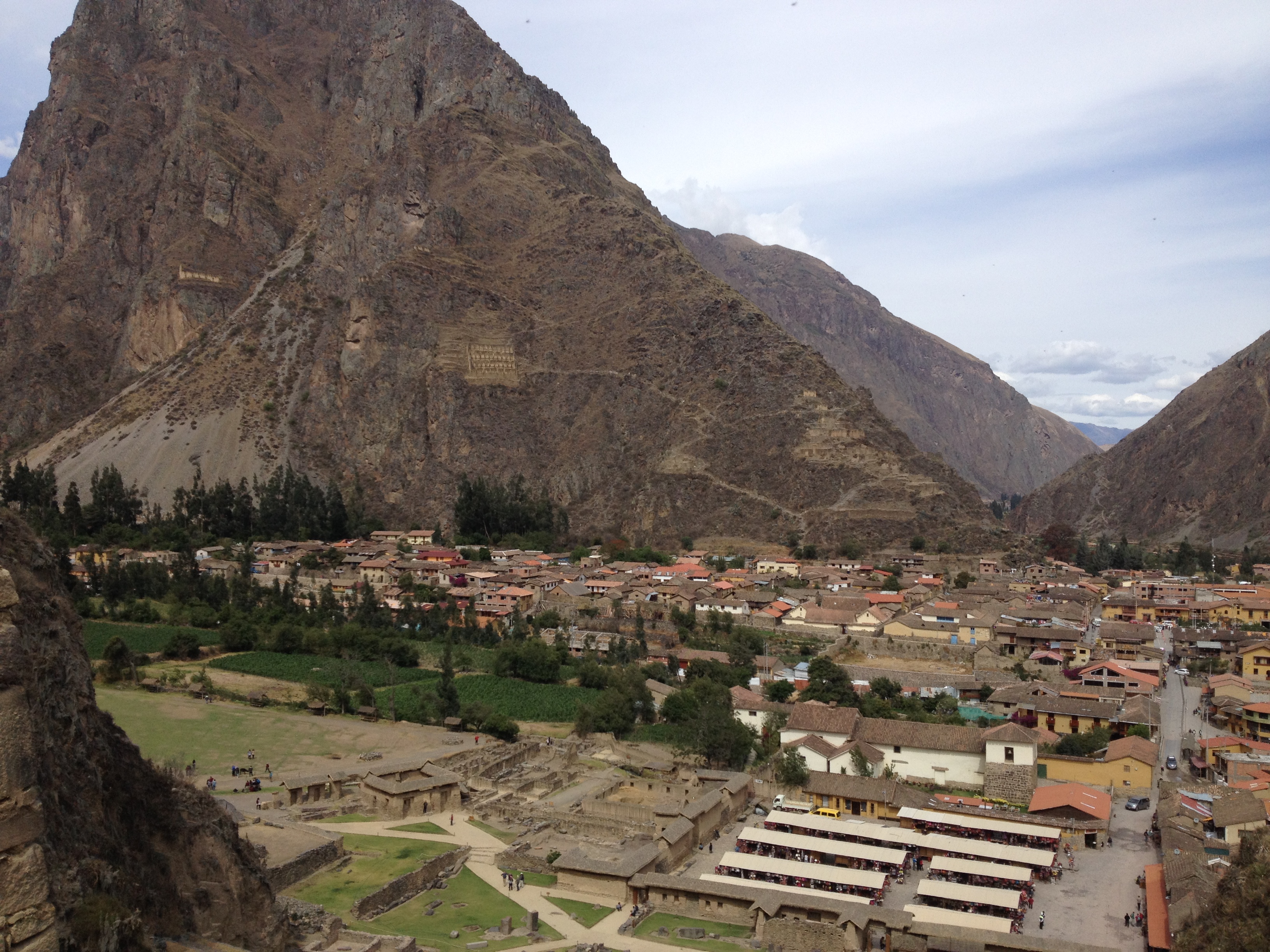 We of course climbed up so see the Inca granaries. Kasper said it was just as scary as Angels Landing in Zion National Park. I guess being outdoors and hiking so much helped me to get over my fear of height, because I did not find the trail scary at all.
We of course climbed up so see the Inca granaries. Kasper said it was just as scary as Angels Landing in Zion National Park. I guess being outdoors and hiking so much helped me to get over my fear of height, because I did not find the trail scary at all.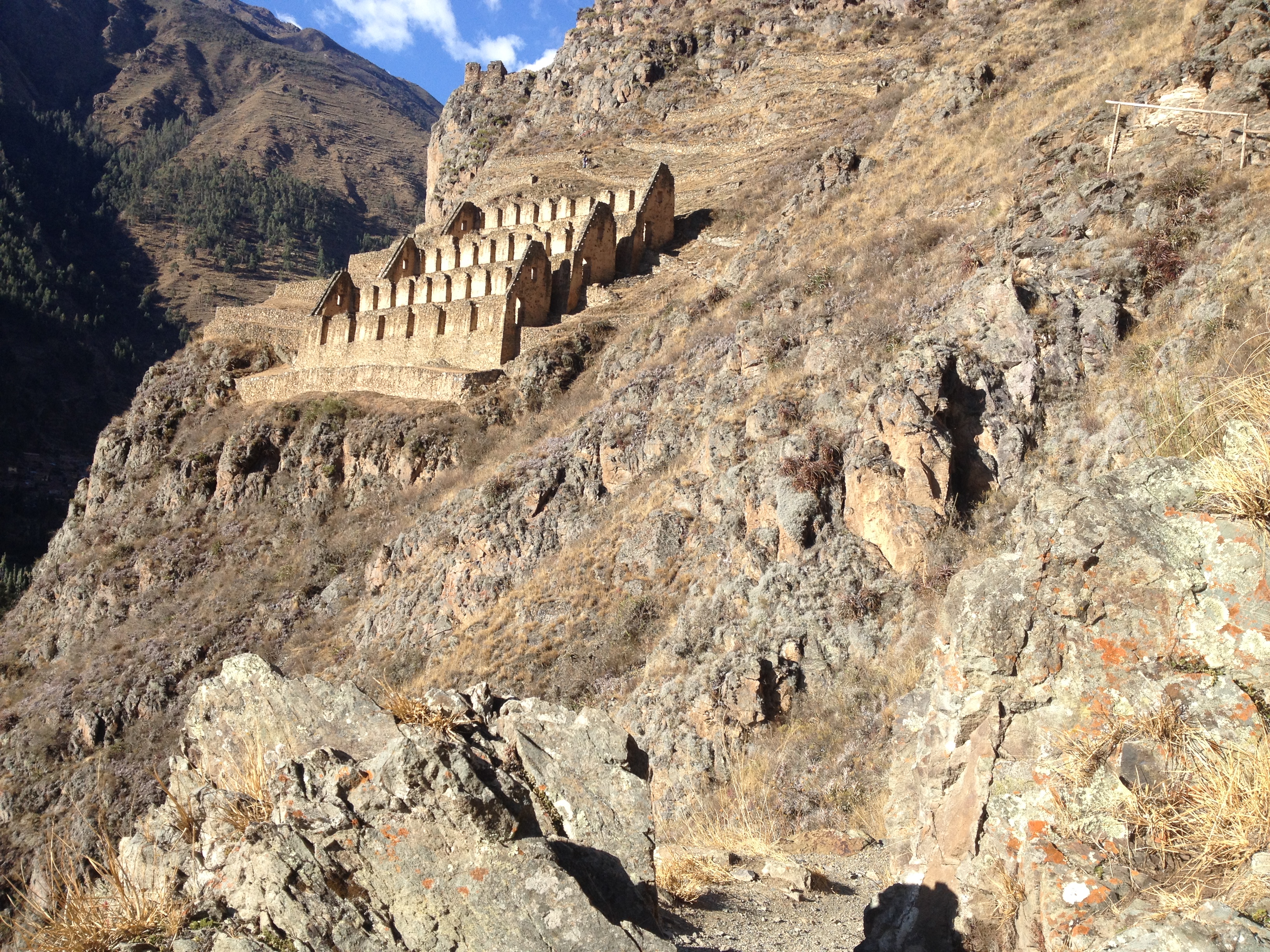
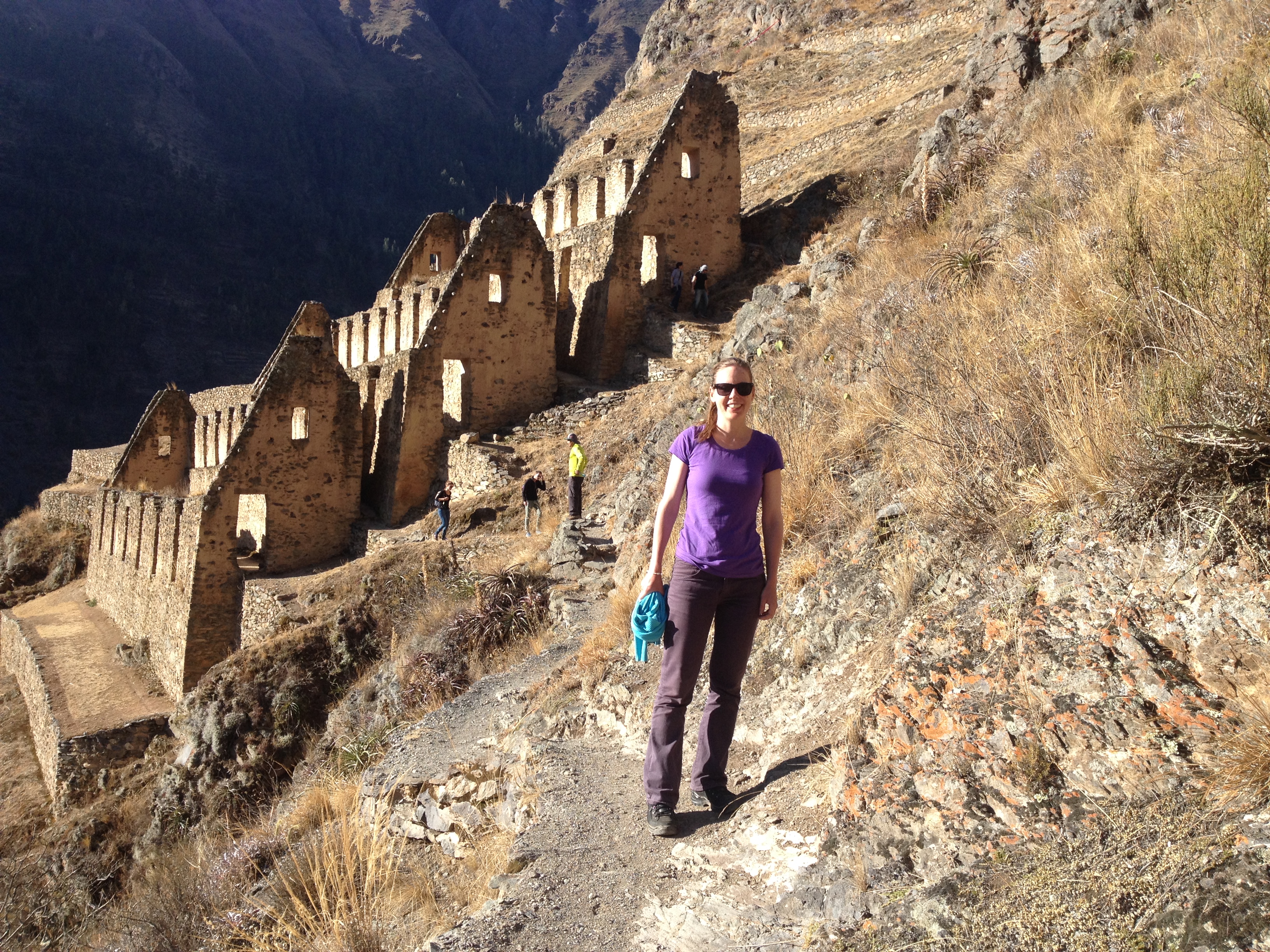
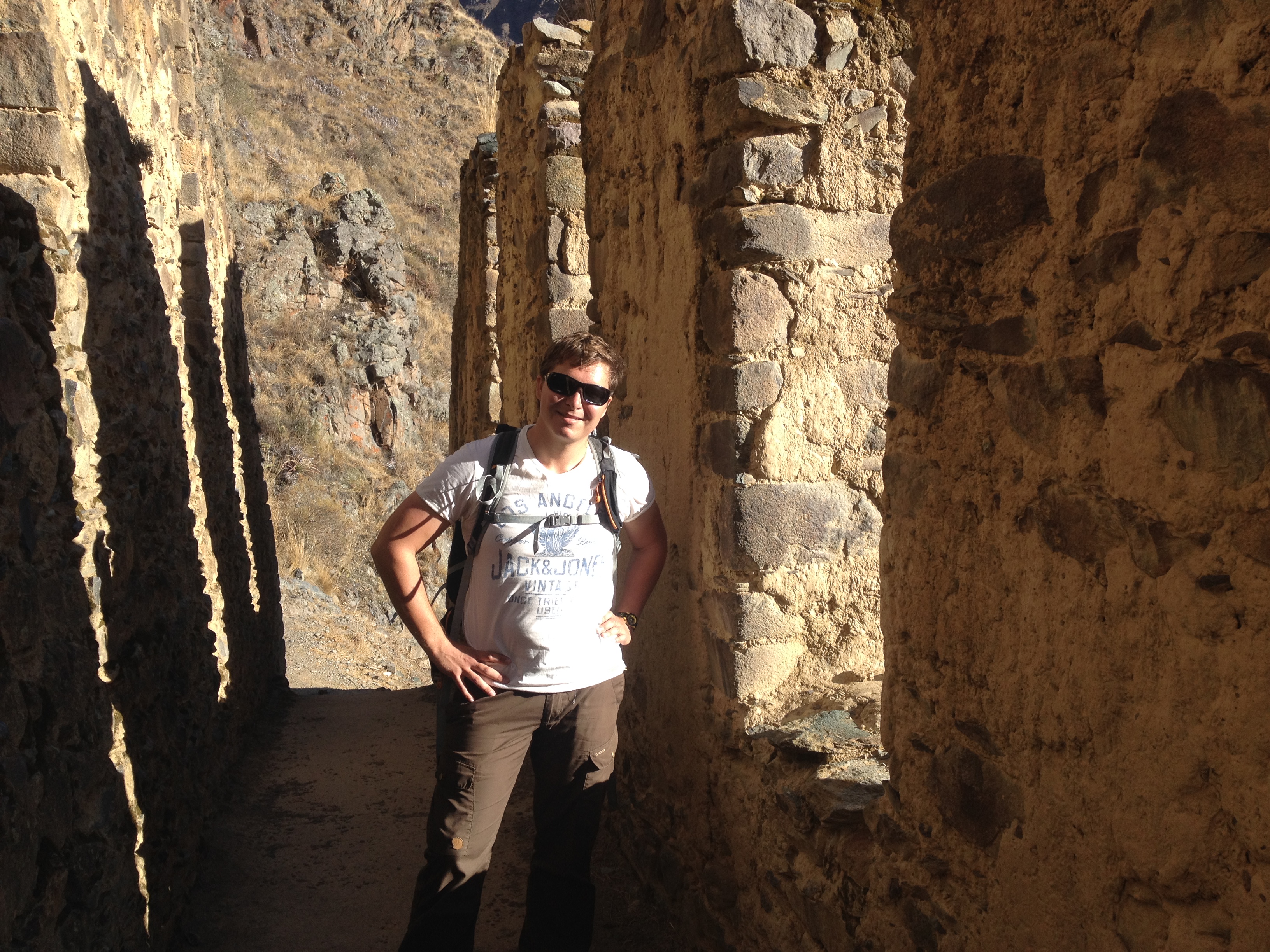
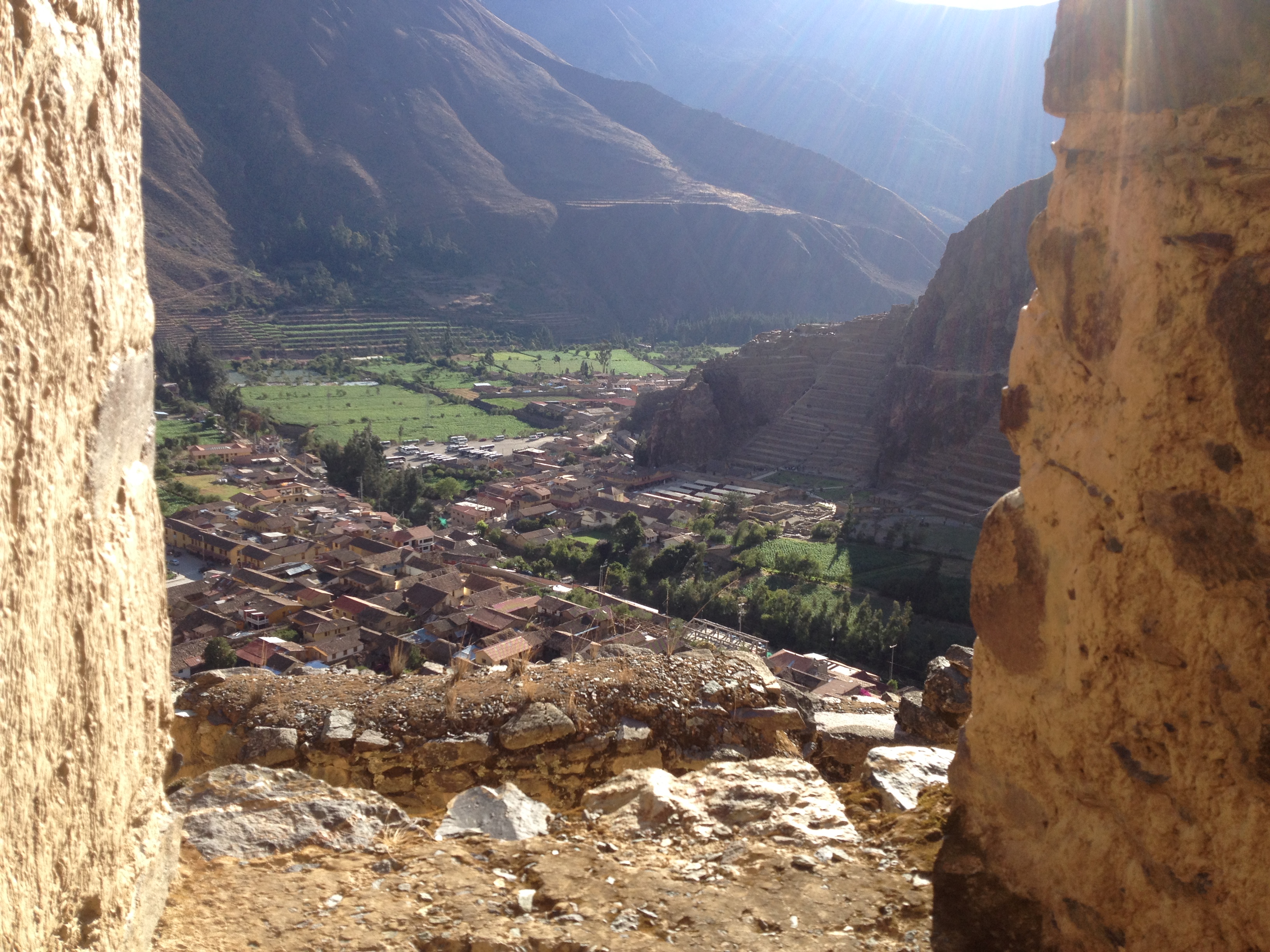

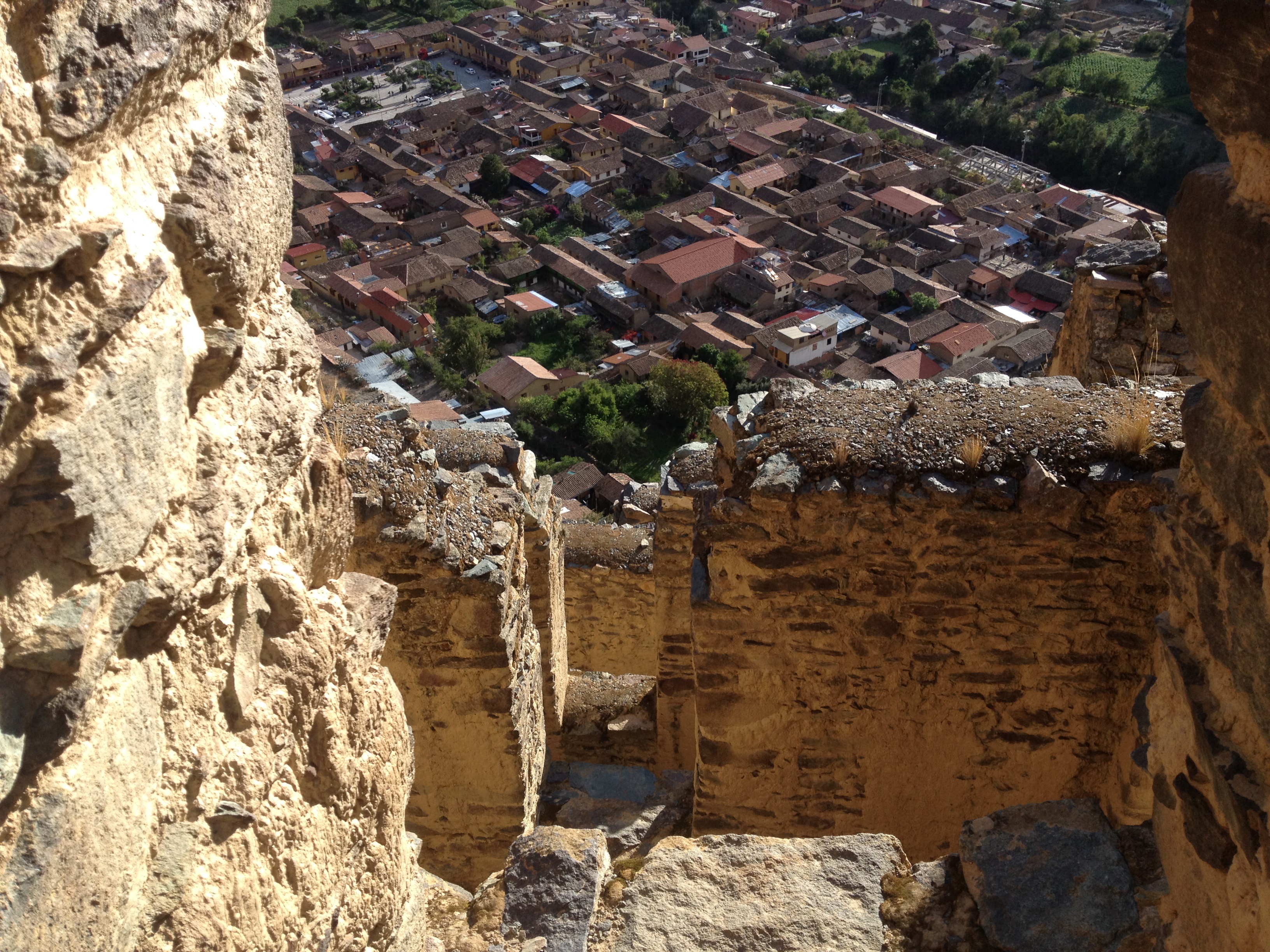 Ollantaytambo is very different from Pisac, because not only the ruins but the town itself dates back to the Inca Empire. In fact Ollantaytambo has some the oldest continuously occupied dwellings in South America. The town's layout and buildings have of course been altered since, but many Inca construction remained in place.
Ollantaytambo is very different from Pisac, because not only the ruins but the town itself dates back to the Inca Empire. In fact Ollantaytambo has some the oldest continuously occupied dwellings in South America. The town's layout and buildings have of course been altered since, but many Inca construction remained in place.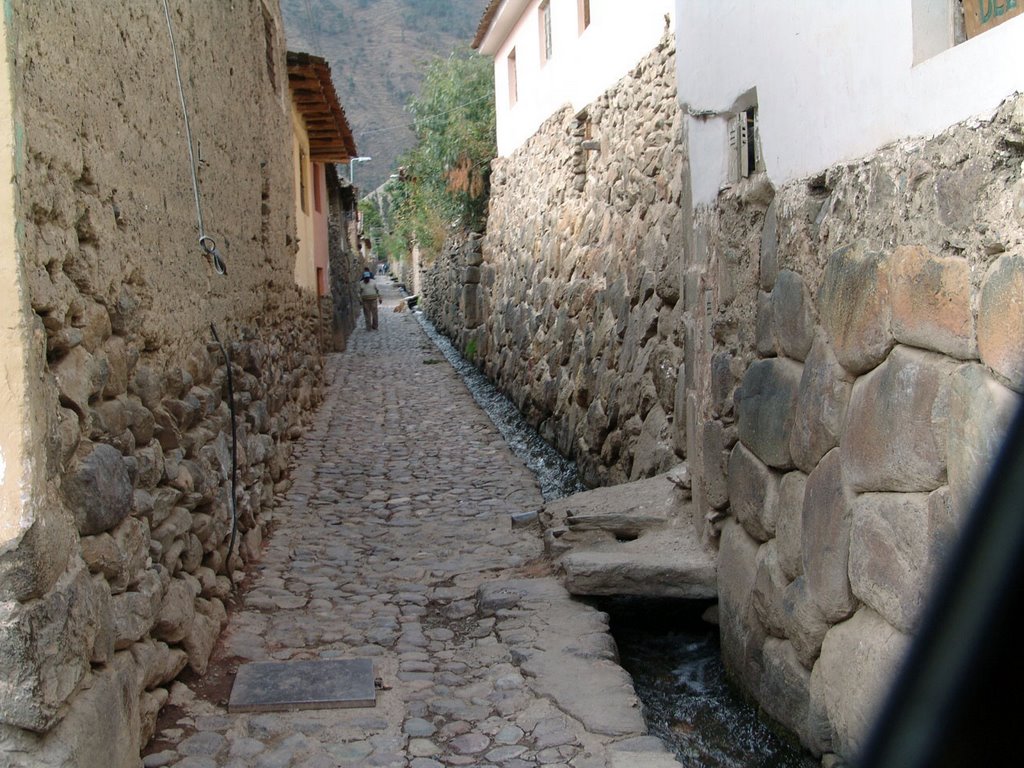 I think Pisac and Ollantaytambo are a must visit for anyone heading to the Sacred Valley, I would recommend to spend one day at each archeological site; it would be a shame to take a touristy visit-three-places-in-a-day kind of tour.
I think Pisac and Ollantaytambo are a must visit for anyone heading to the Sacred Valley, I would recommend to spend one day at each archeological site; it would be a shame to take a touristy visit-three-places-in-a-day kind of tour.














 I think Pisac and Ollantaytambo are a must visit for anyone heading to the Sacred Valley, I would recommend to spend one day at each archeological site; it would be a shame to take a touristy visit-three-places-in-a-day kind of tour.
I think Pisac and Ollantaytambo are a must visit for anyone heading to the Sacred Valley, I would recommend to spend one day at each archeological site; it would be a shame to take a touristy visit-three-places-in-a-day kind of tour.